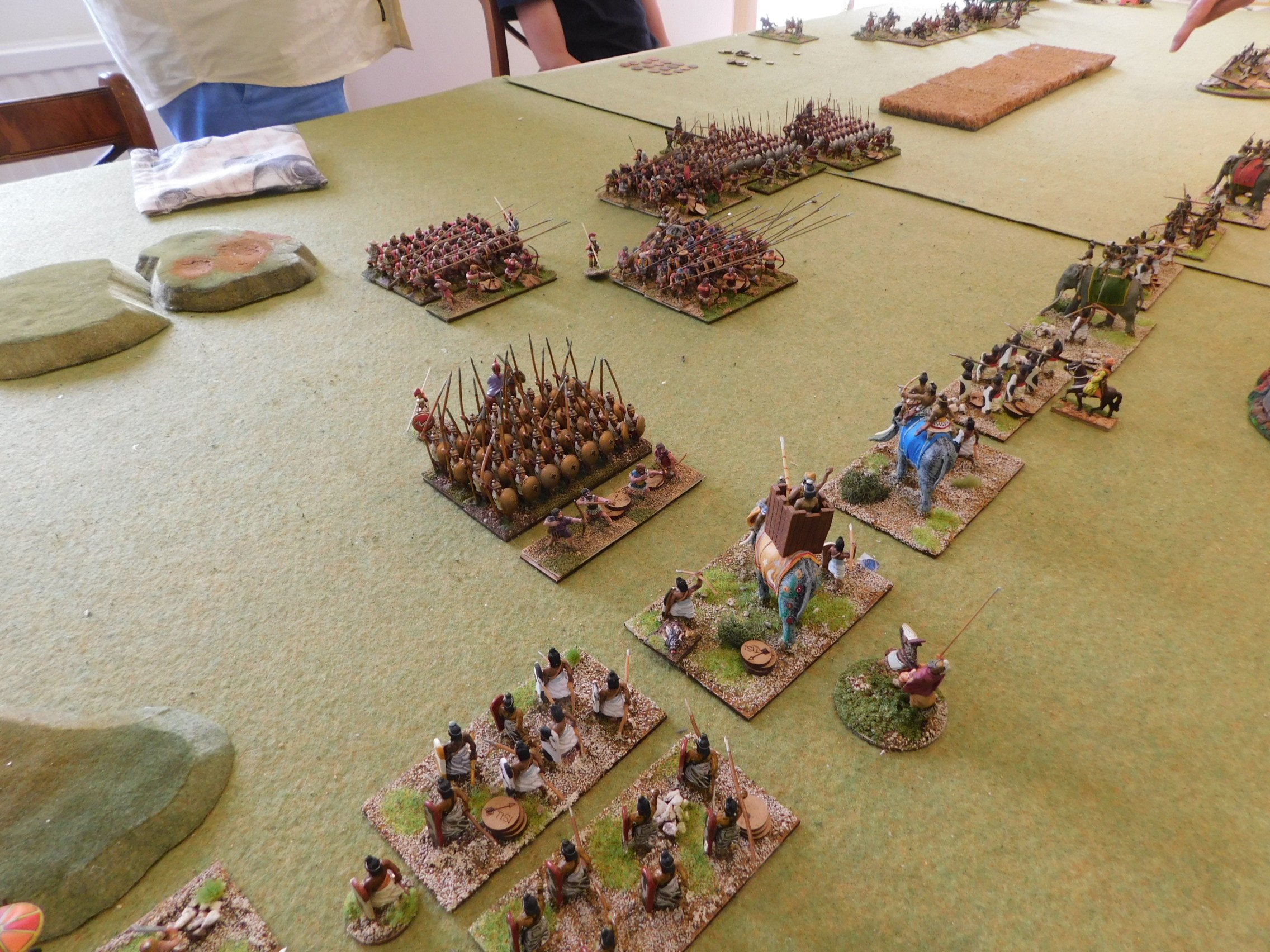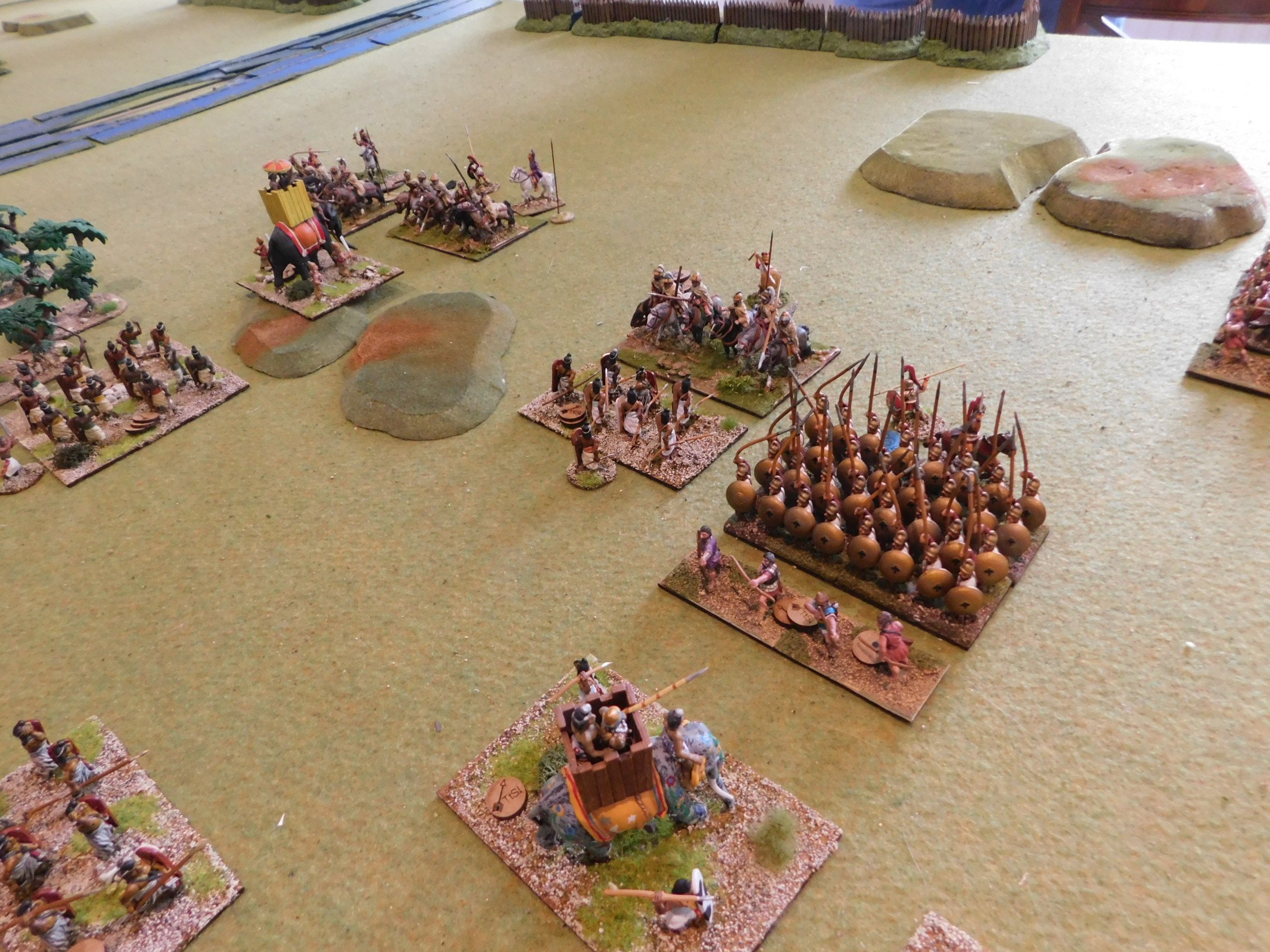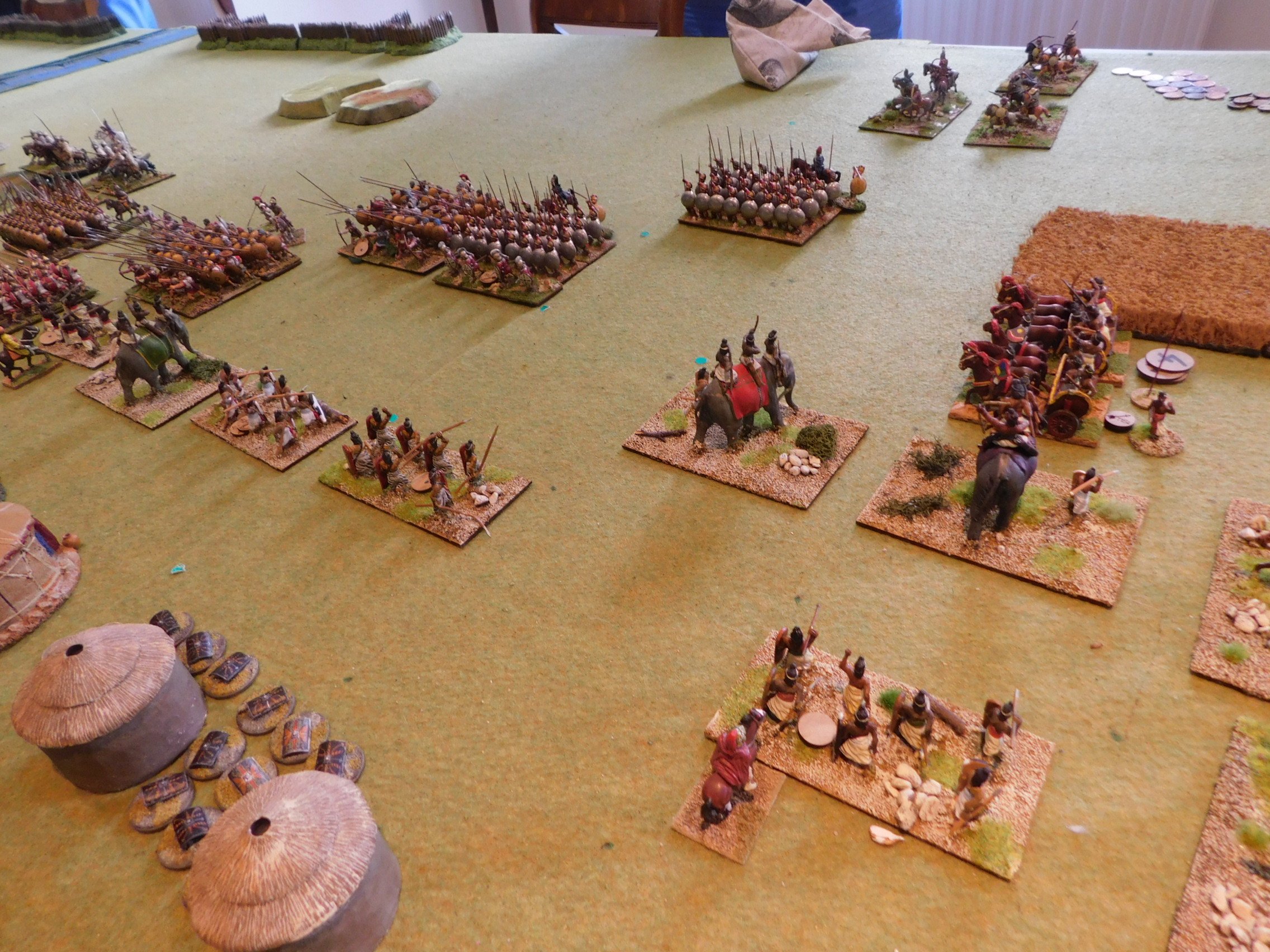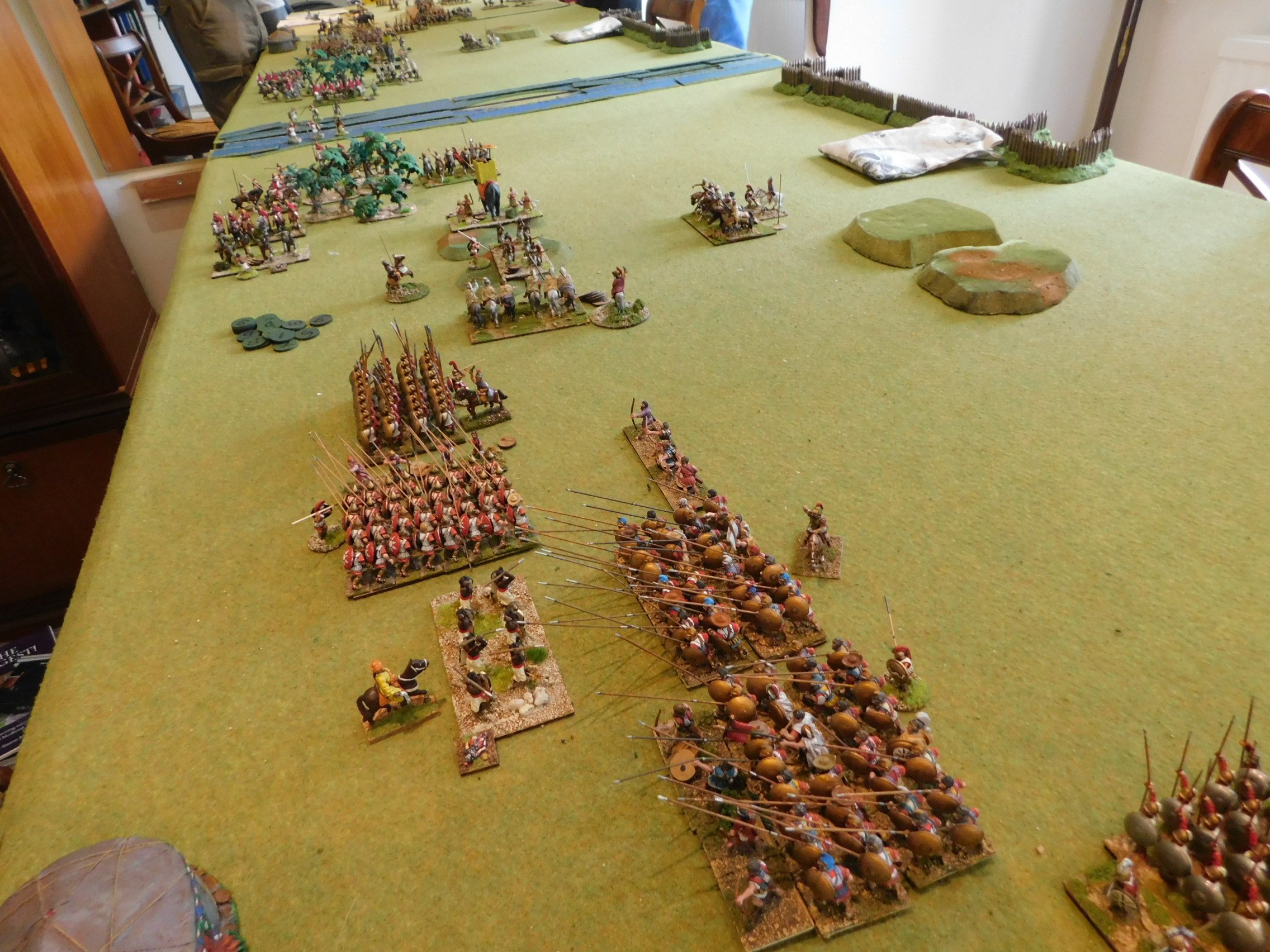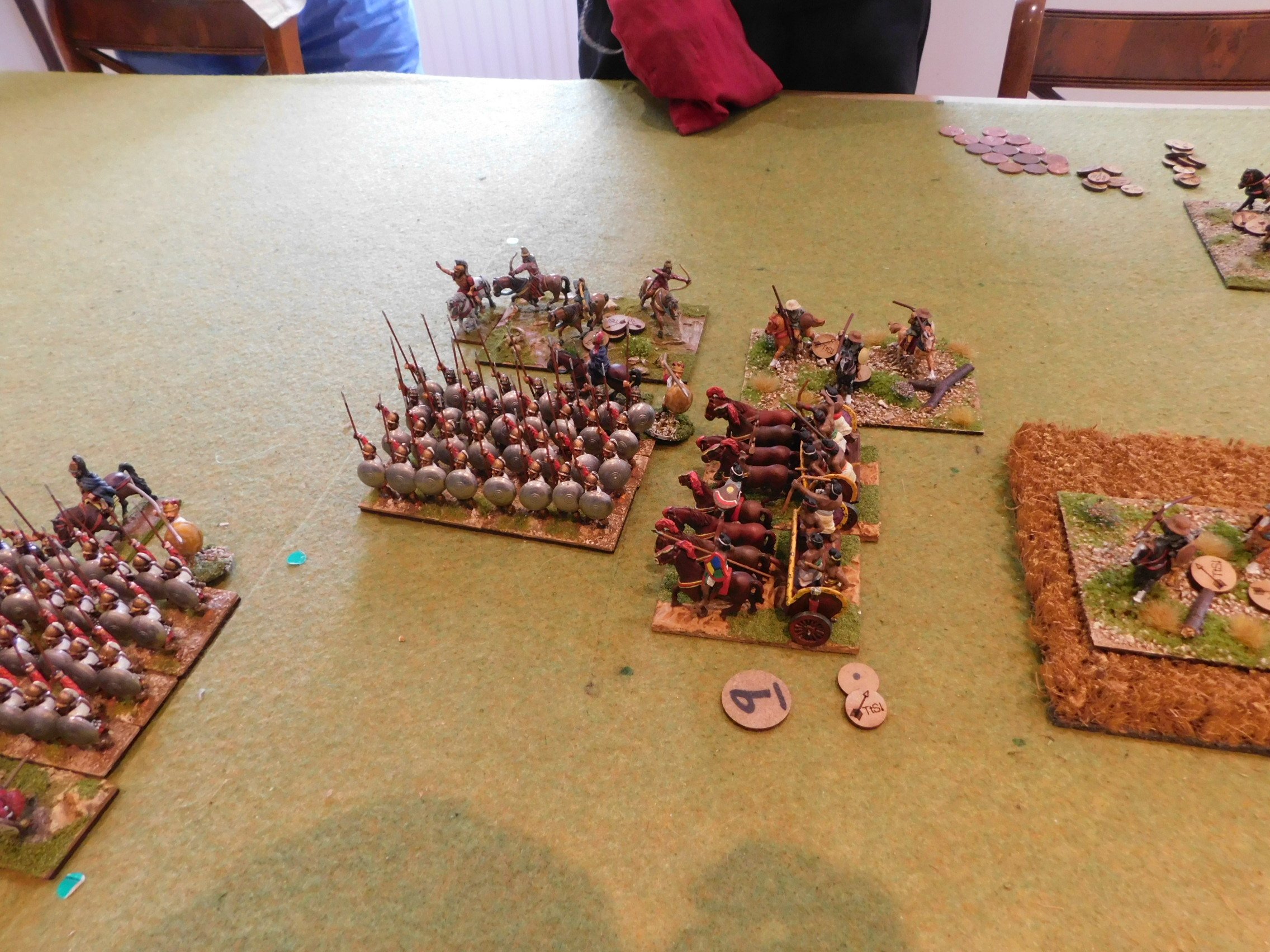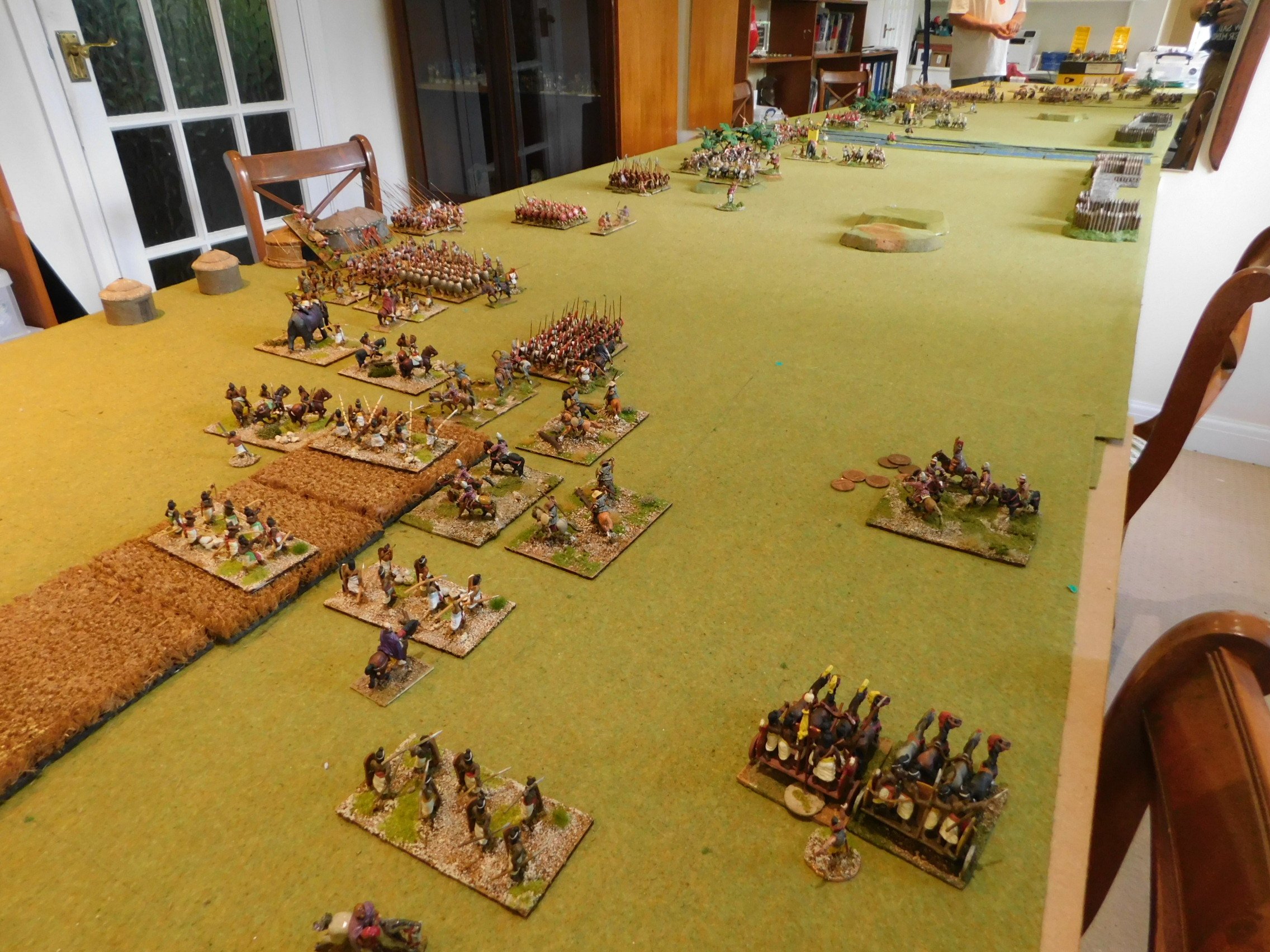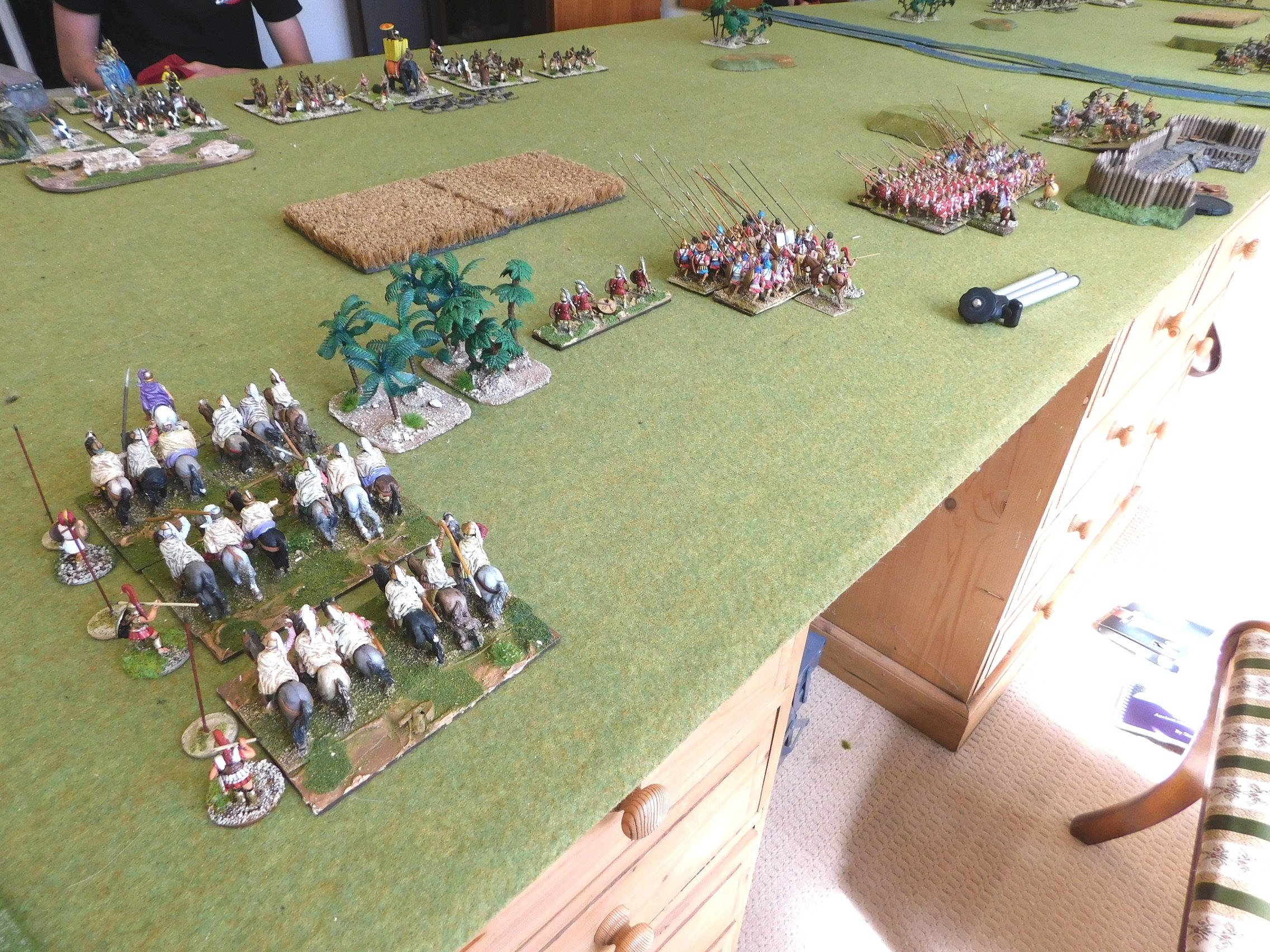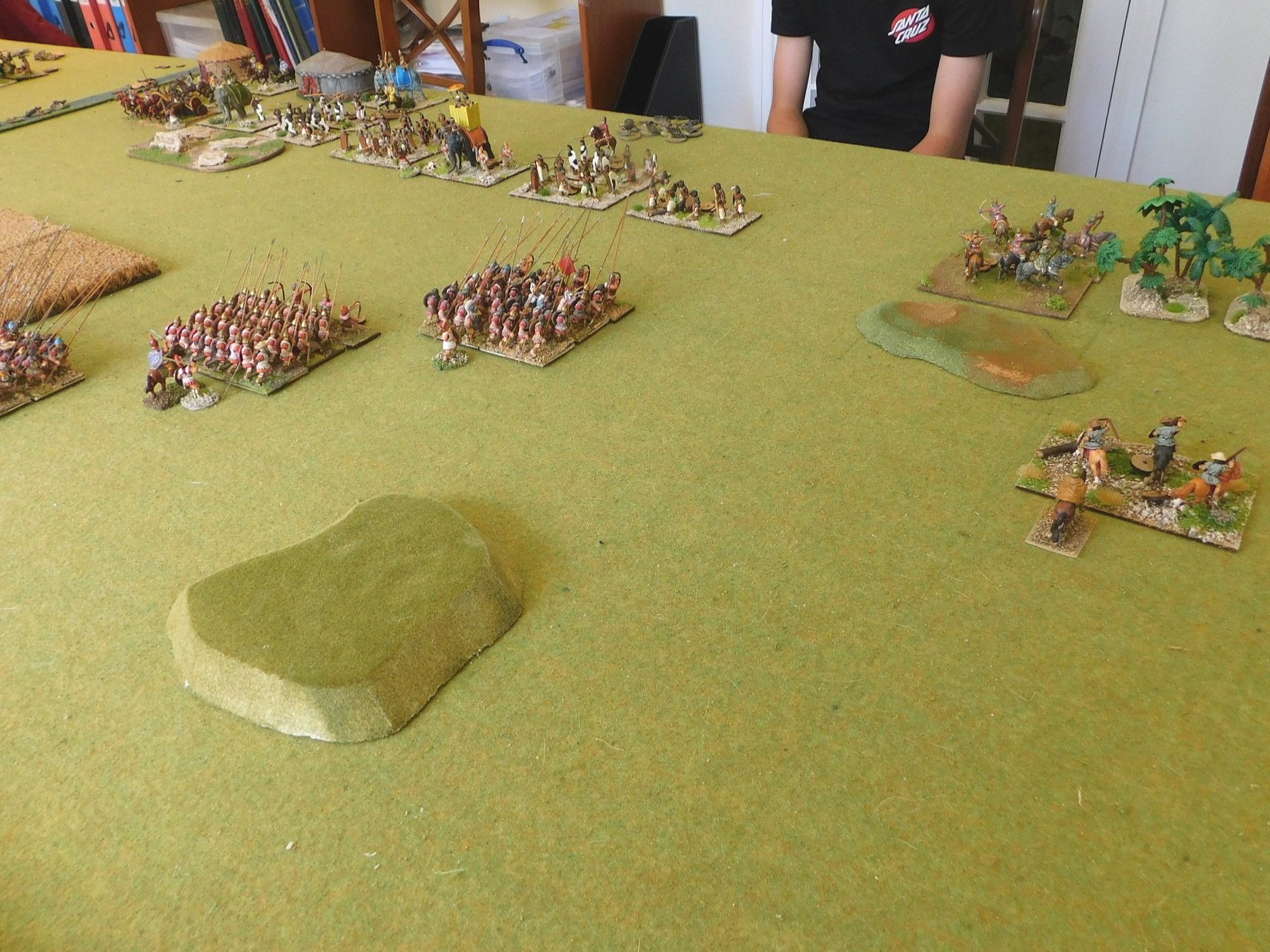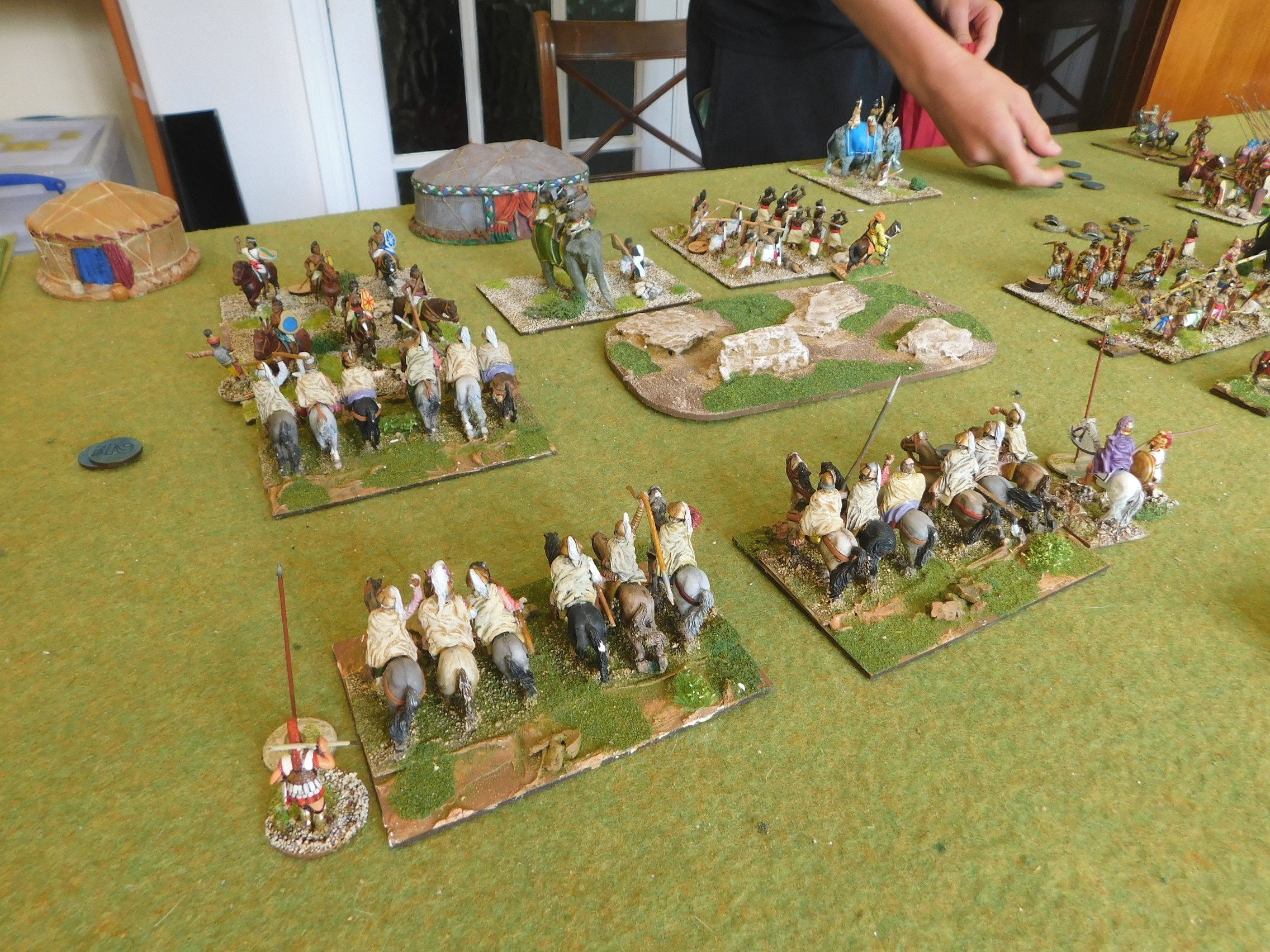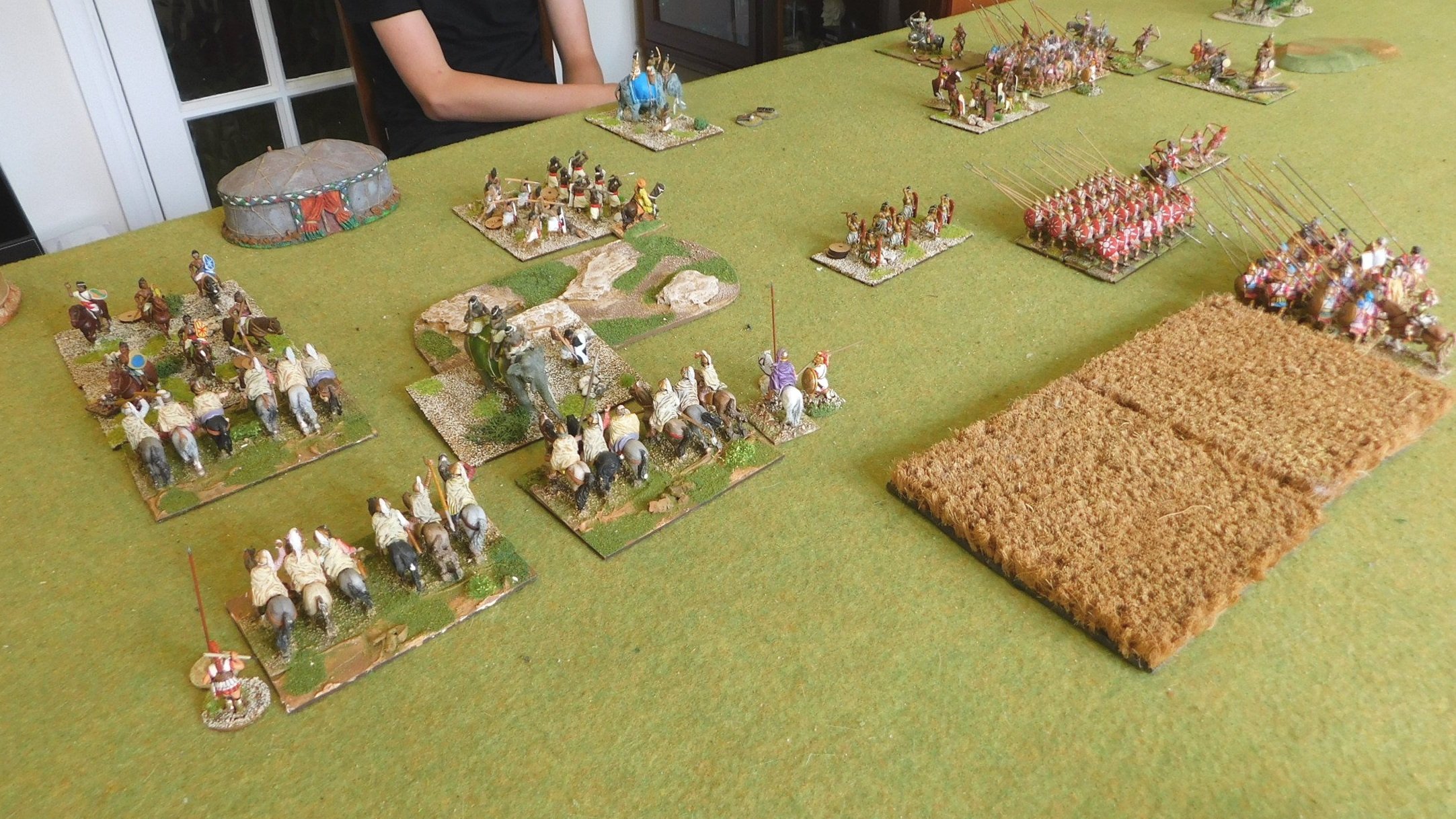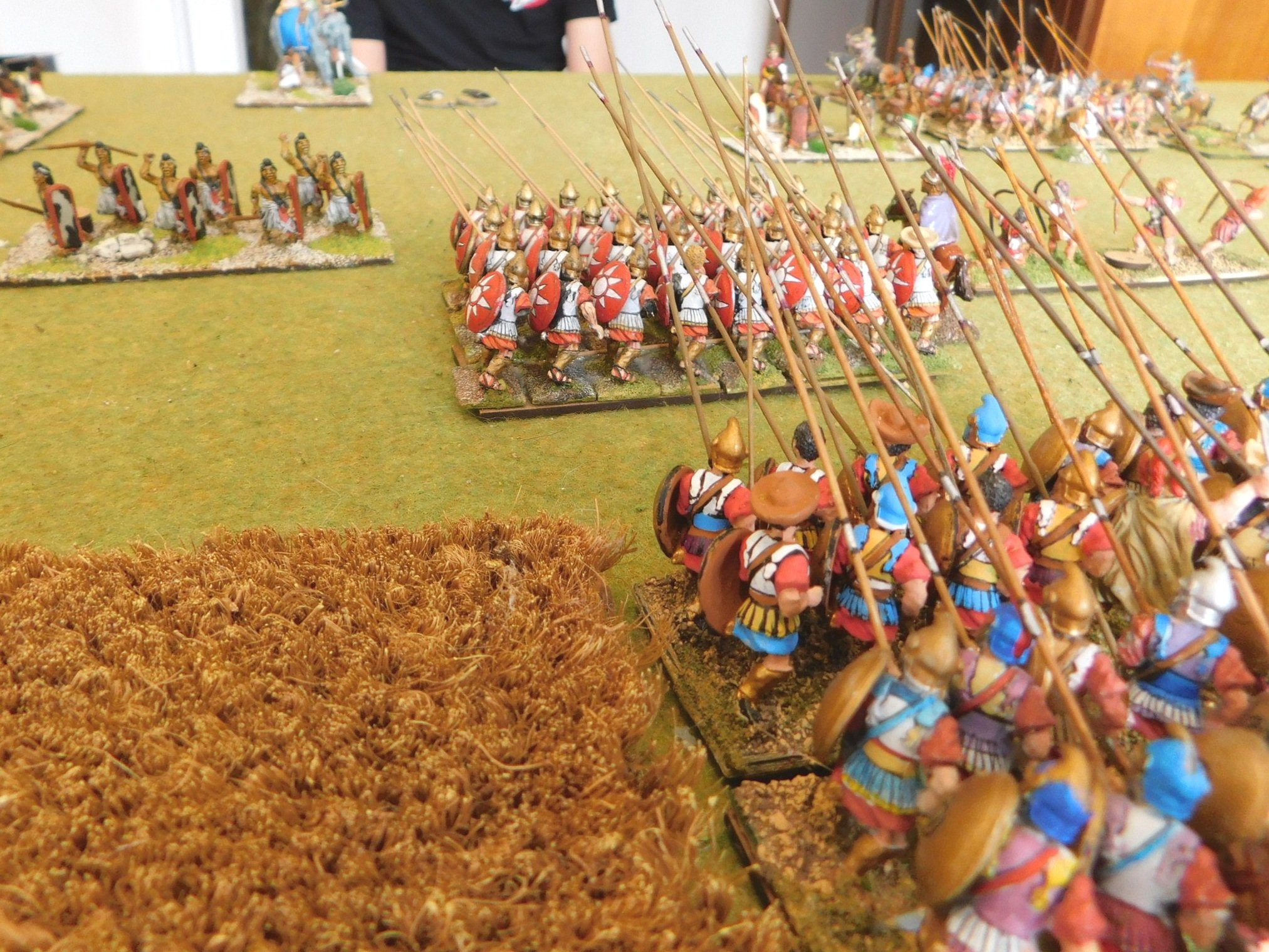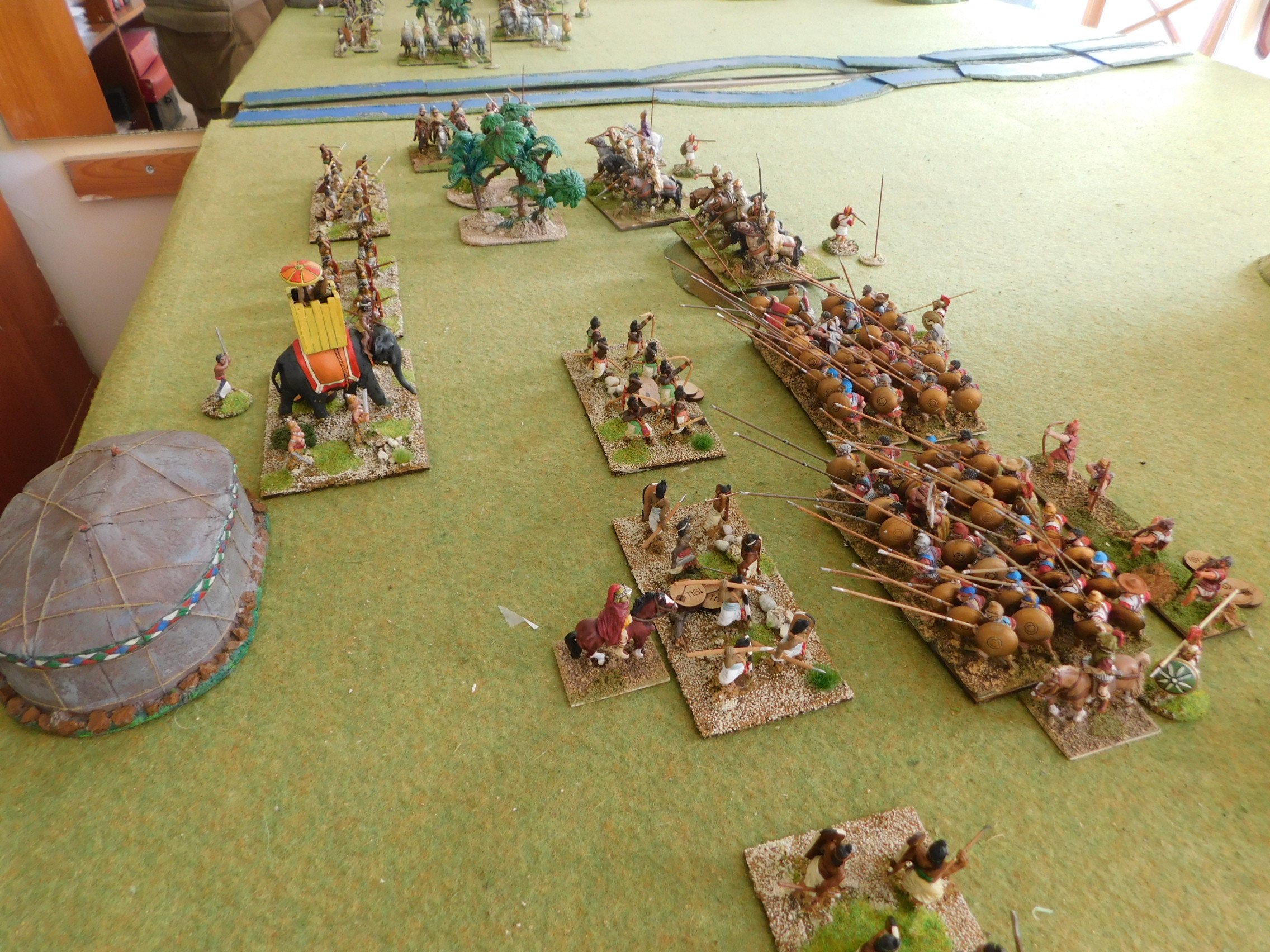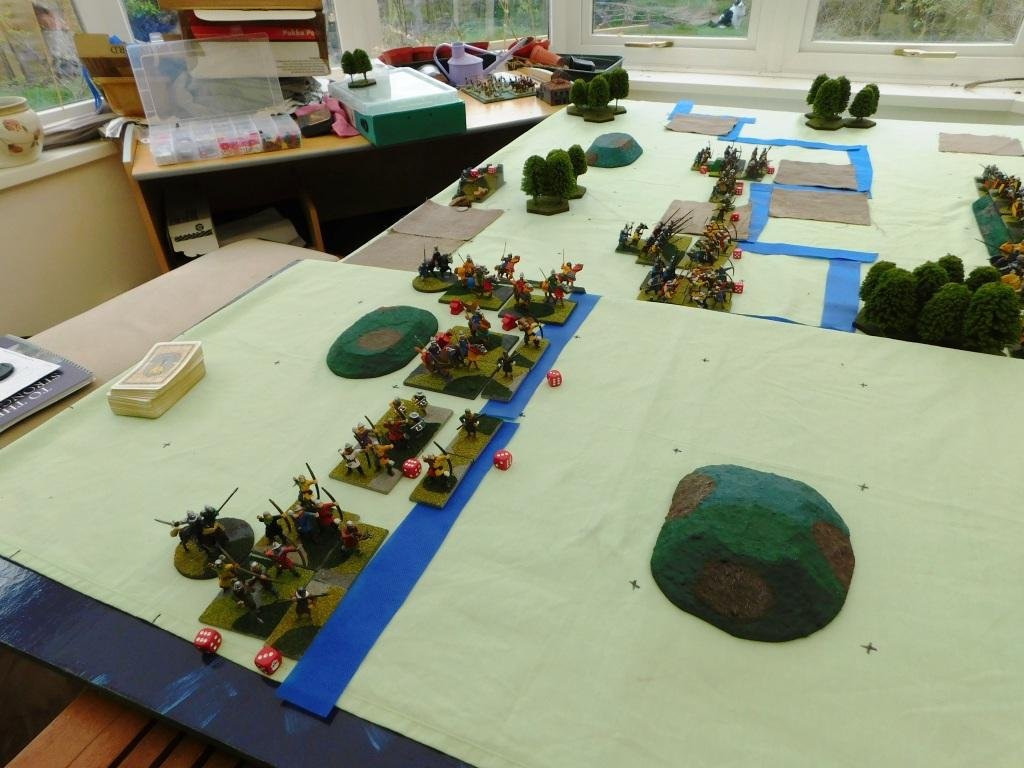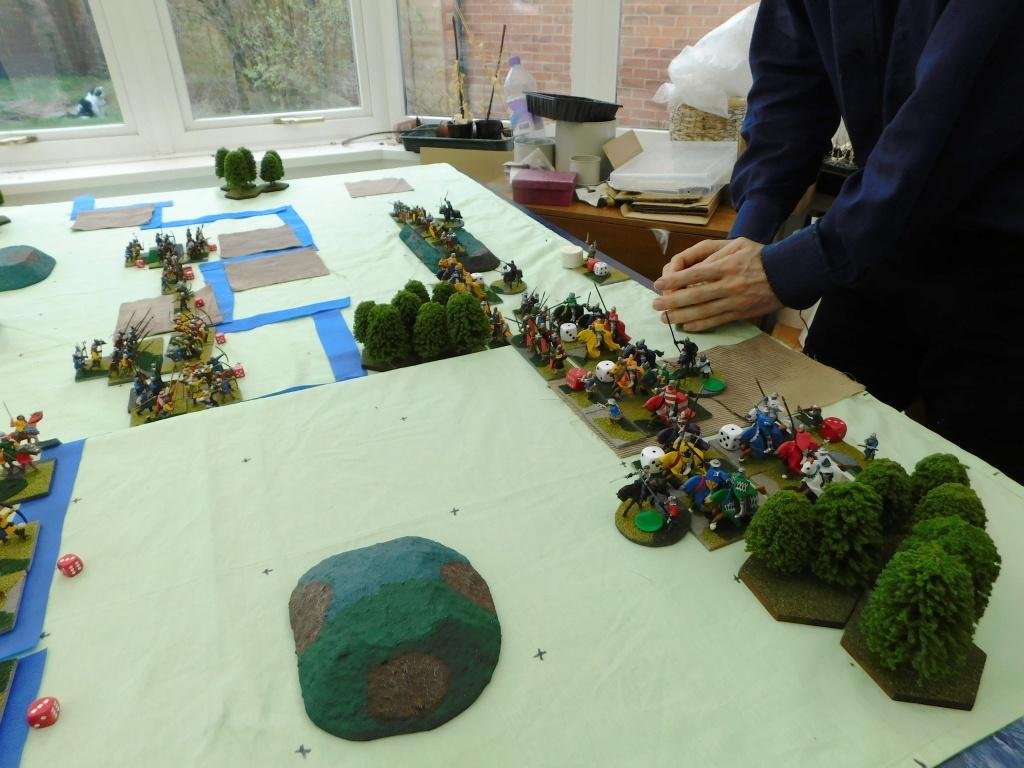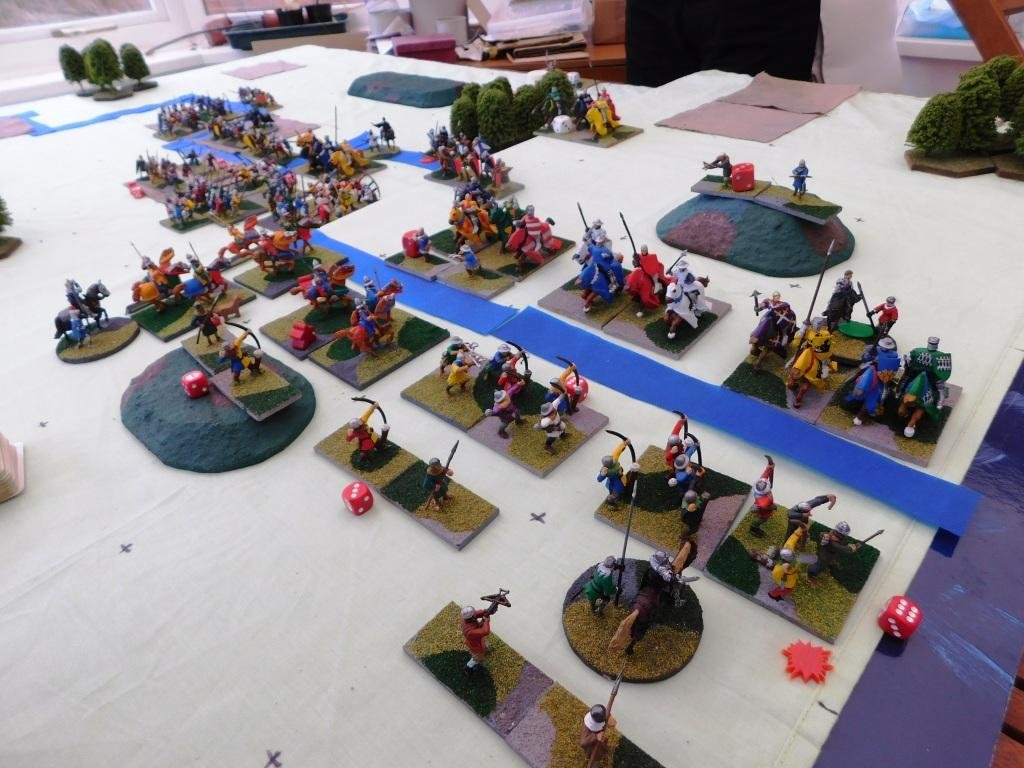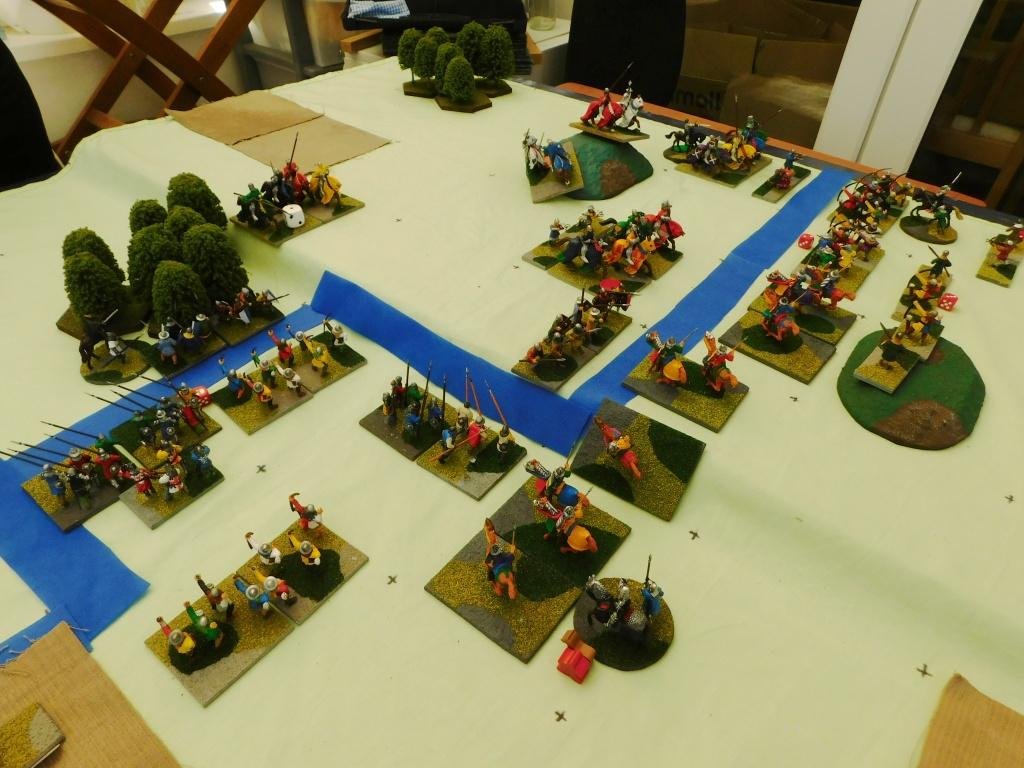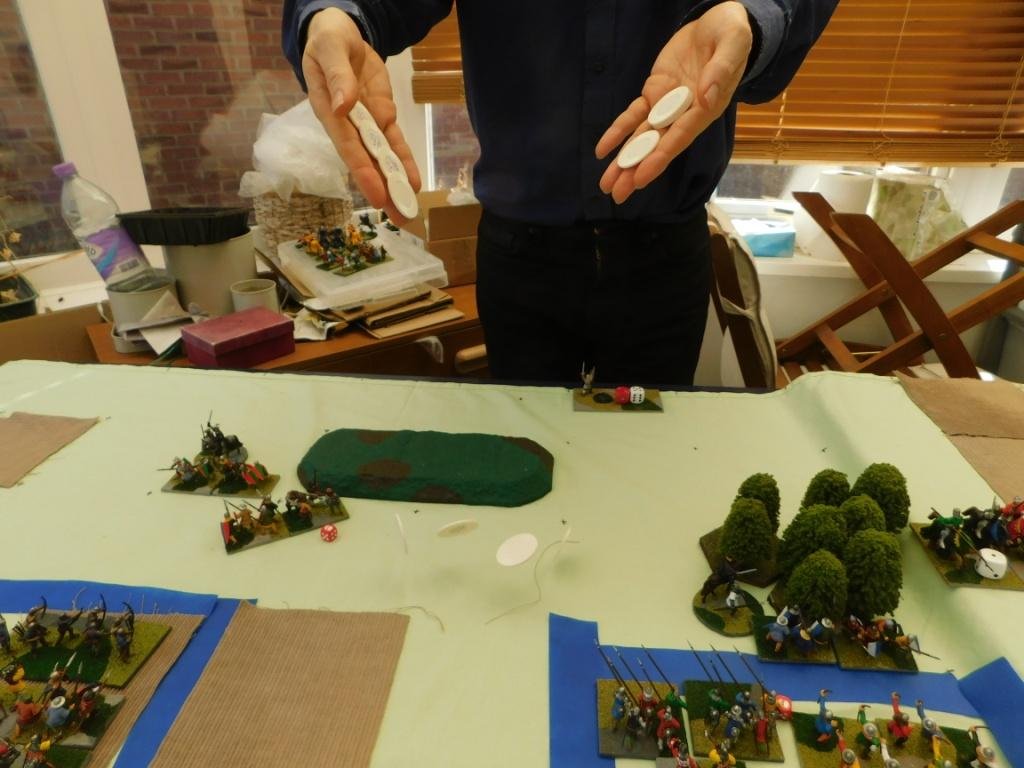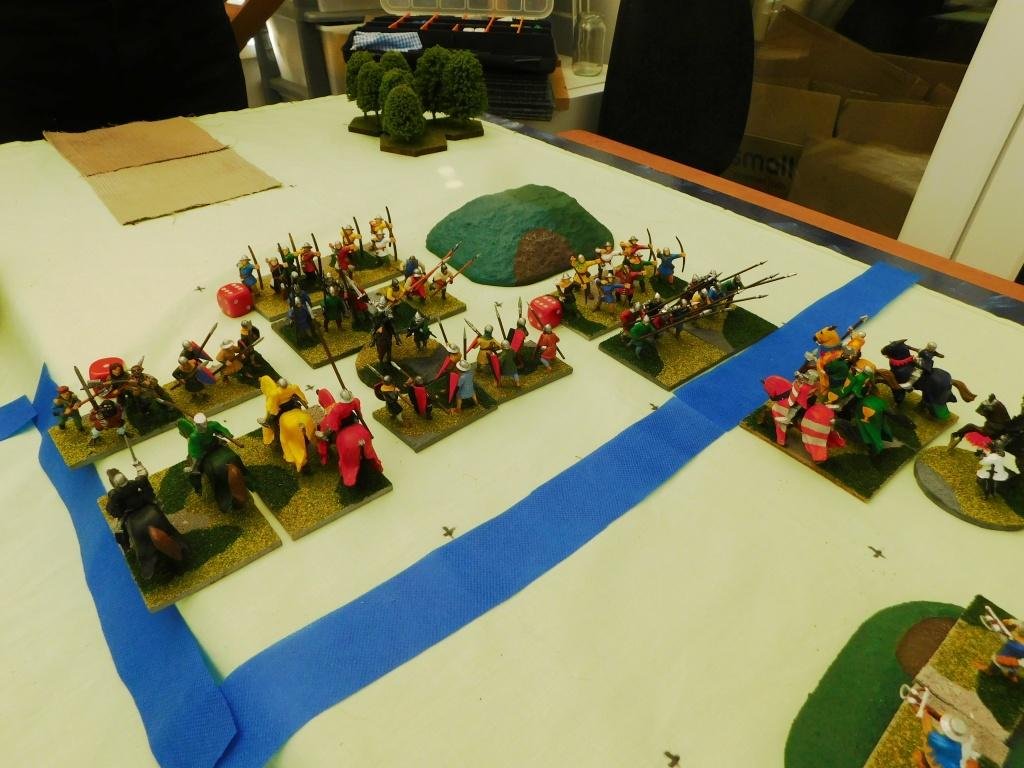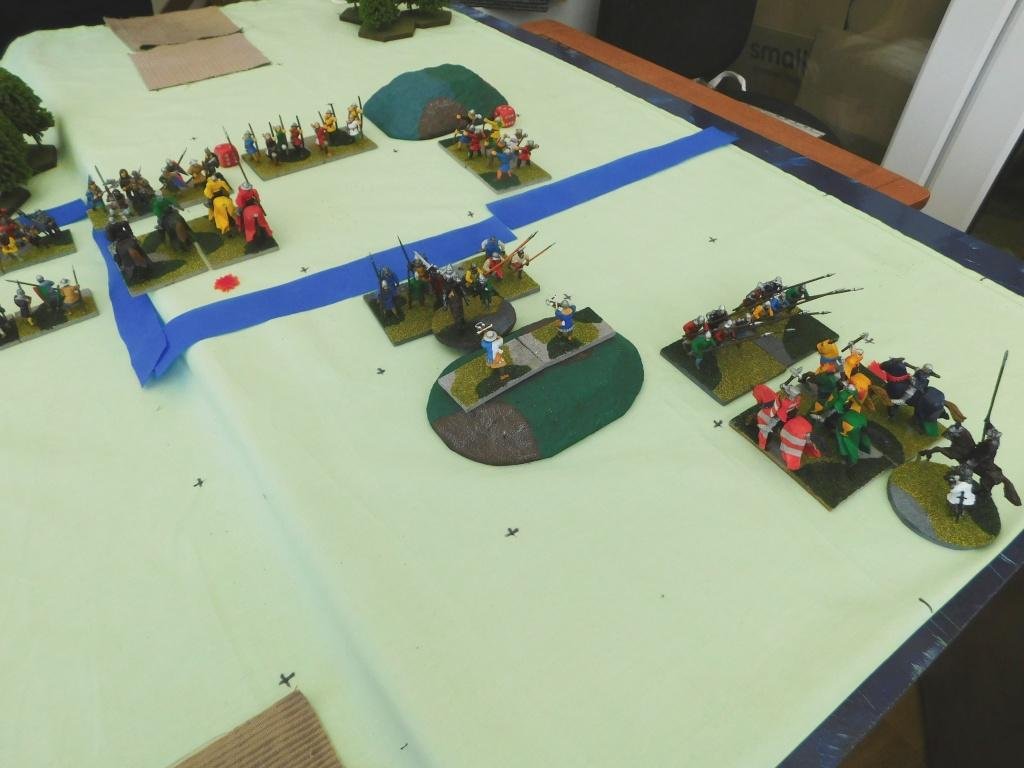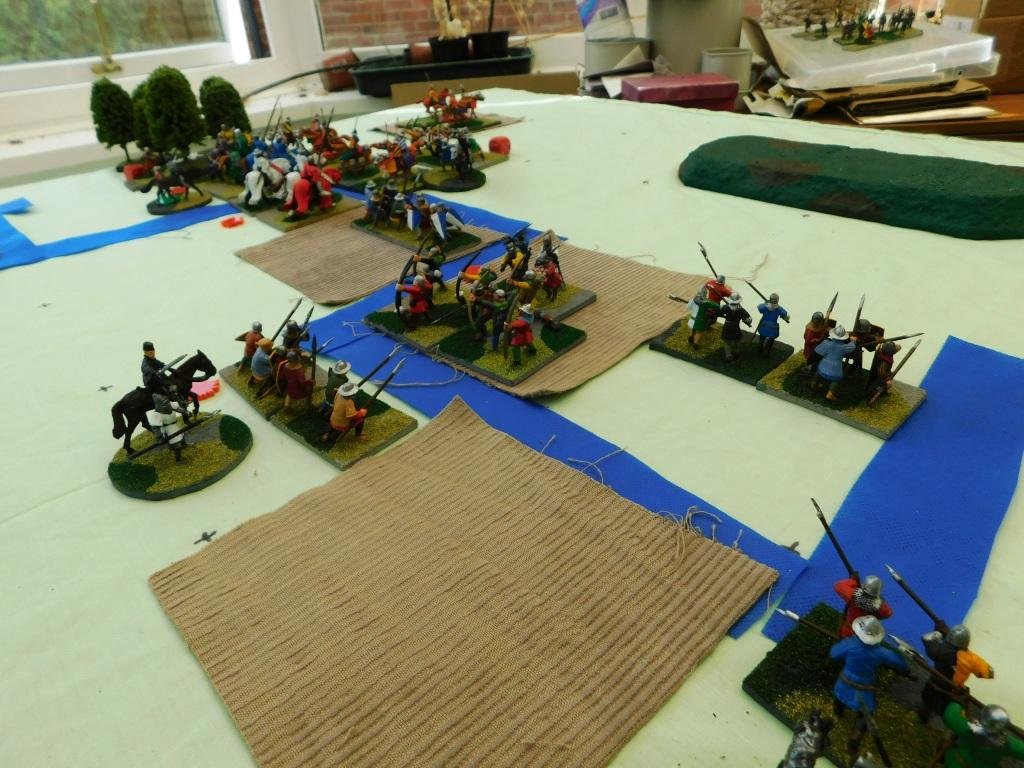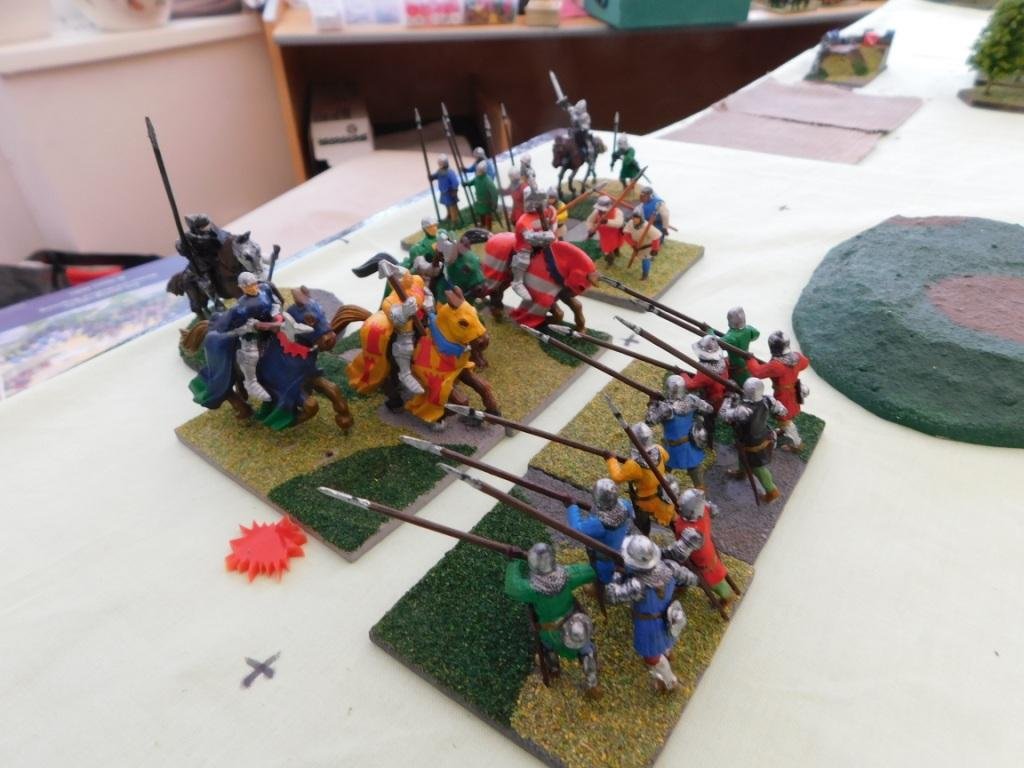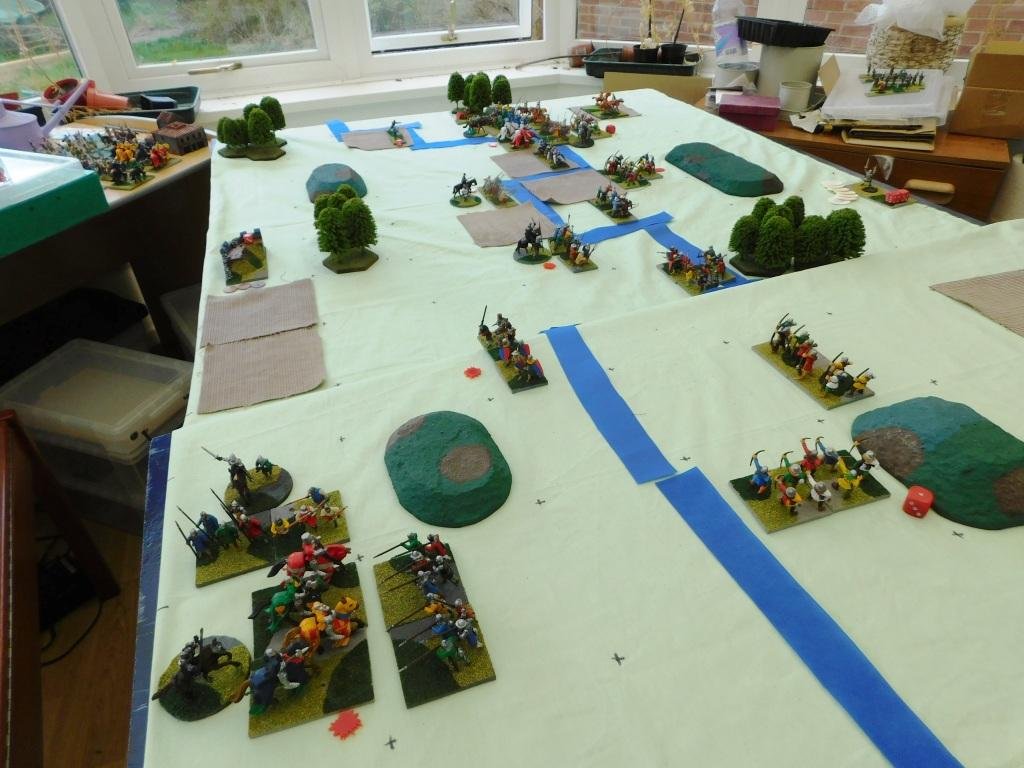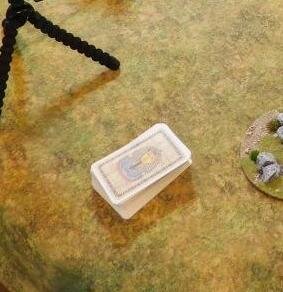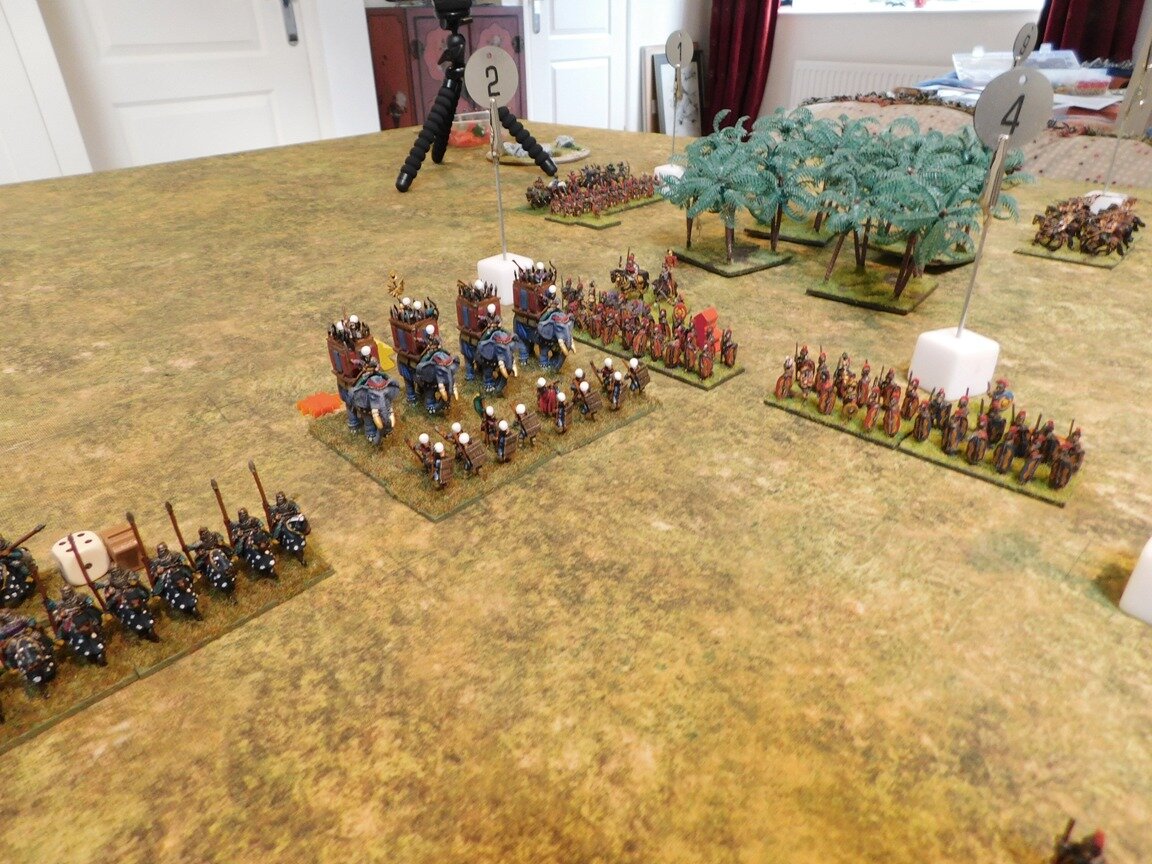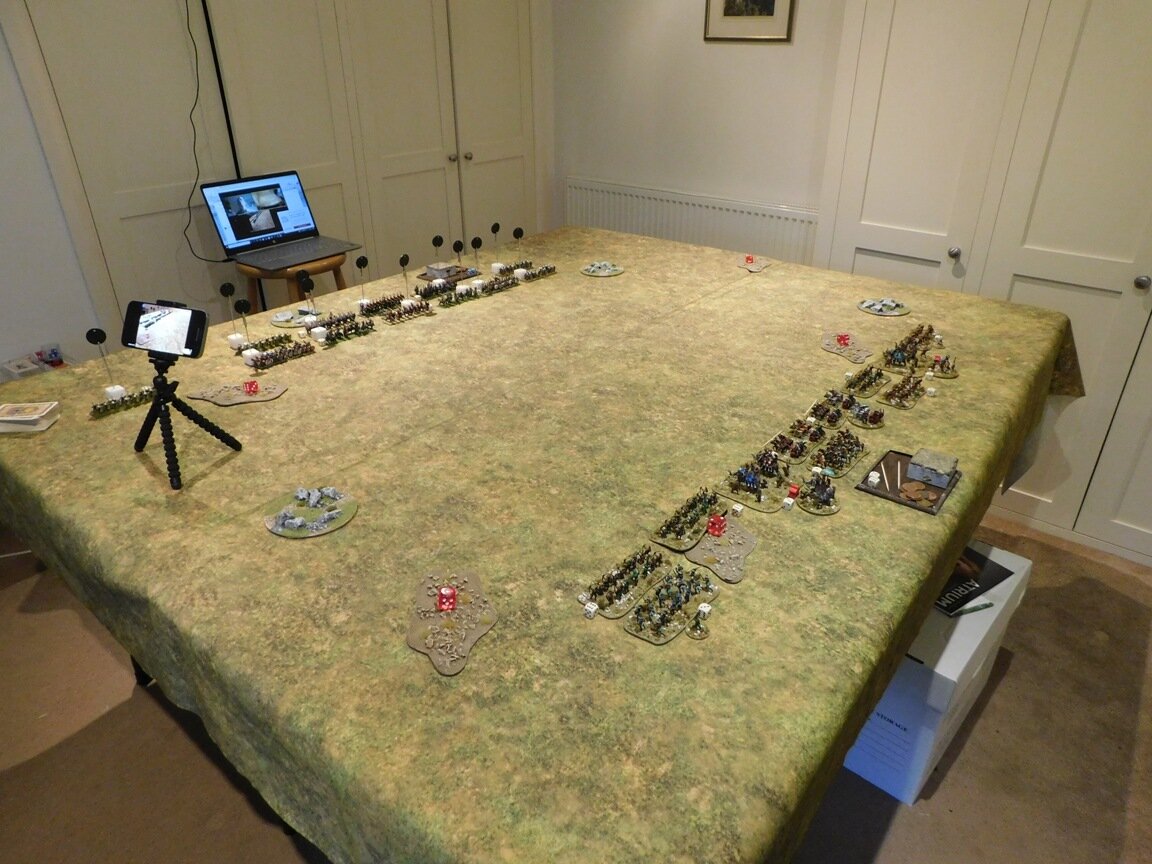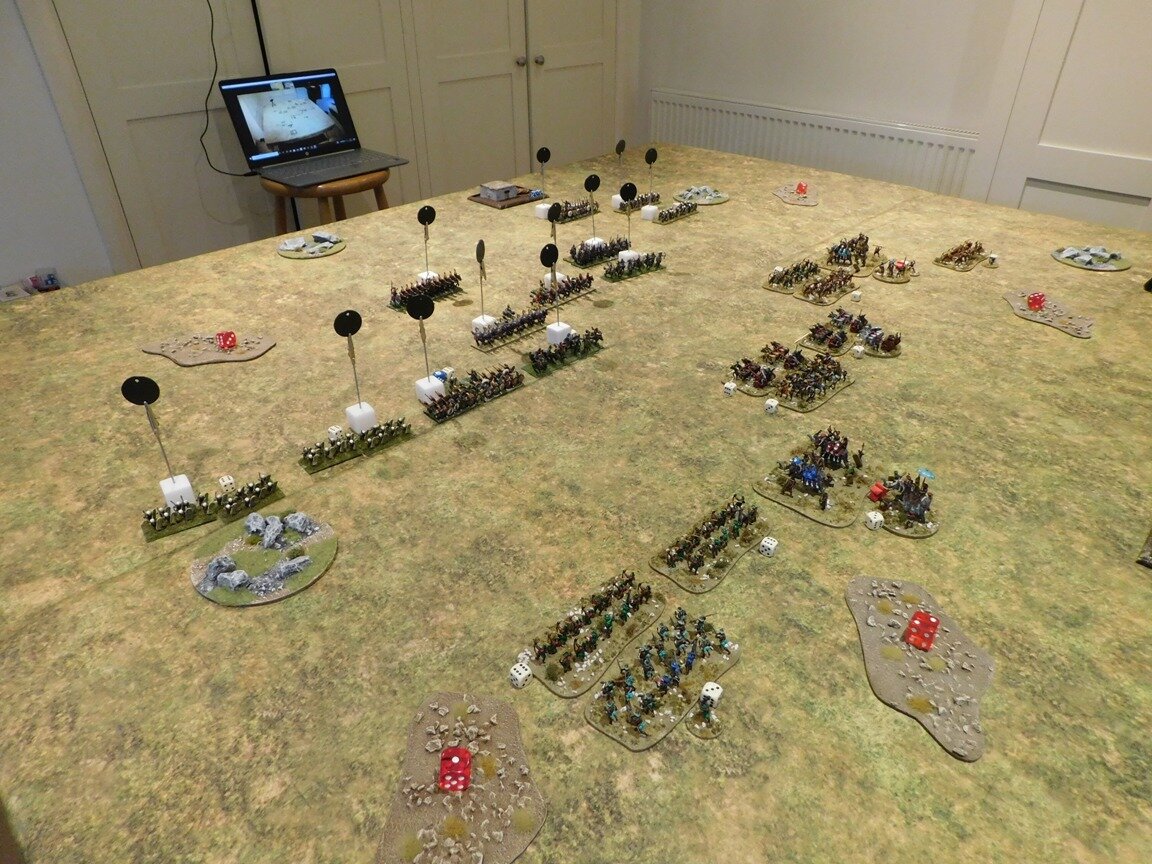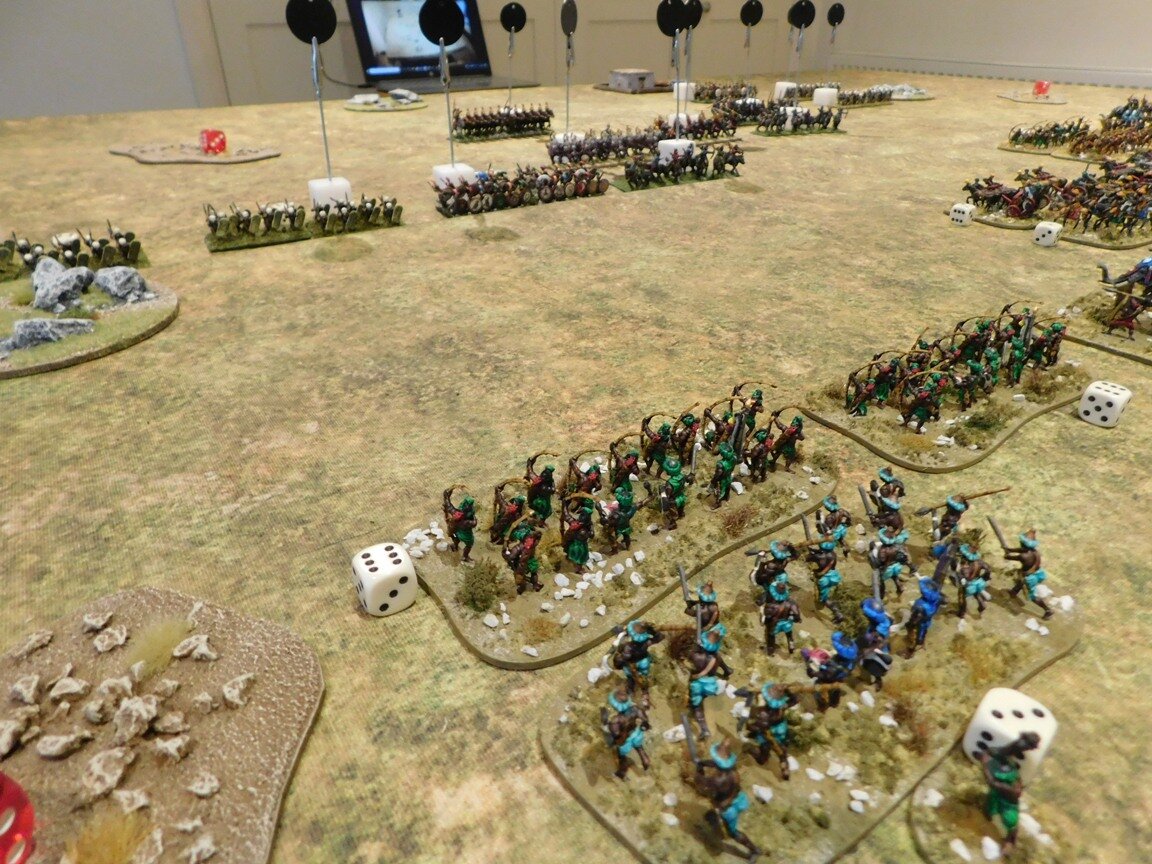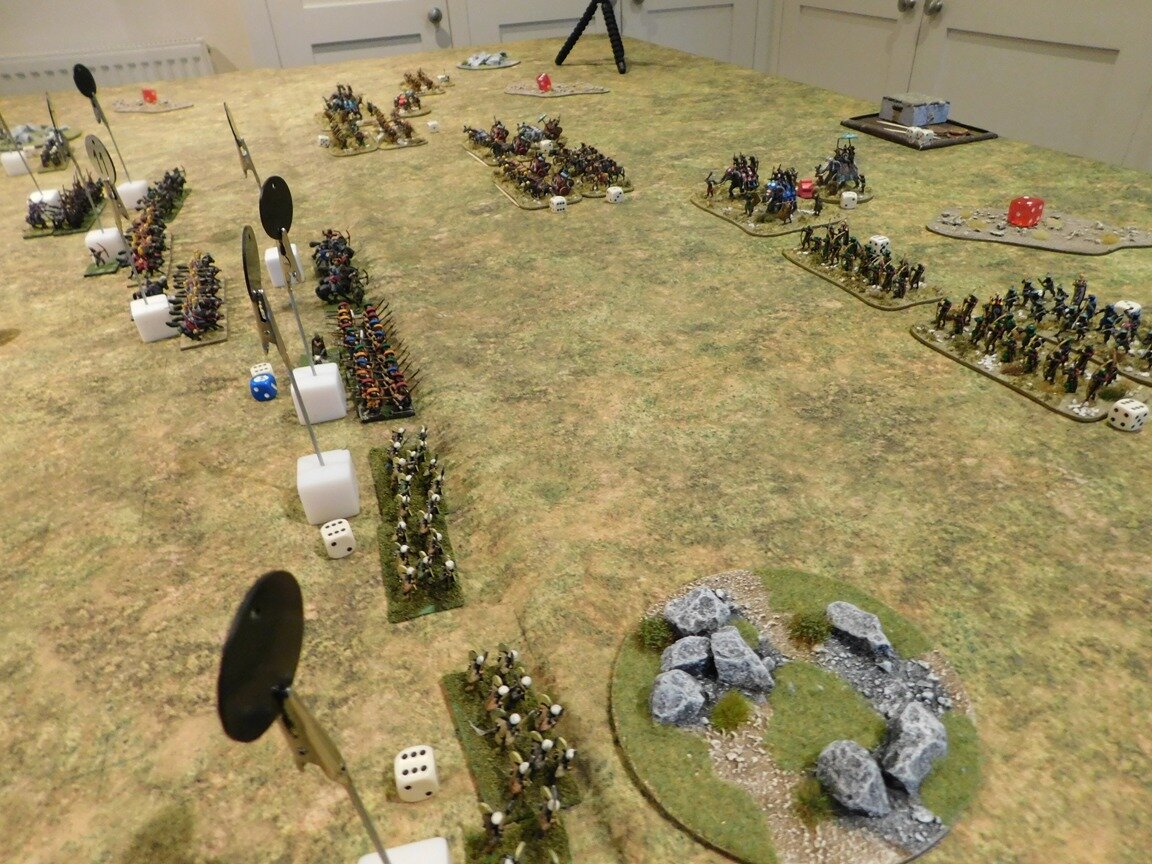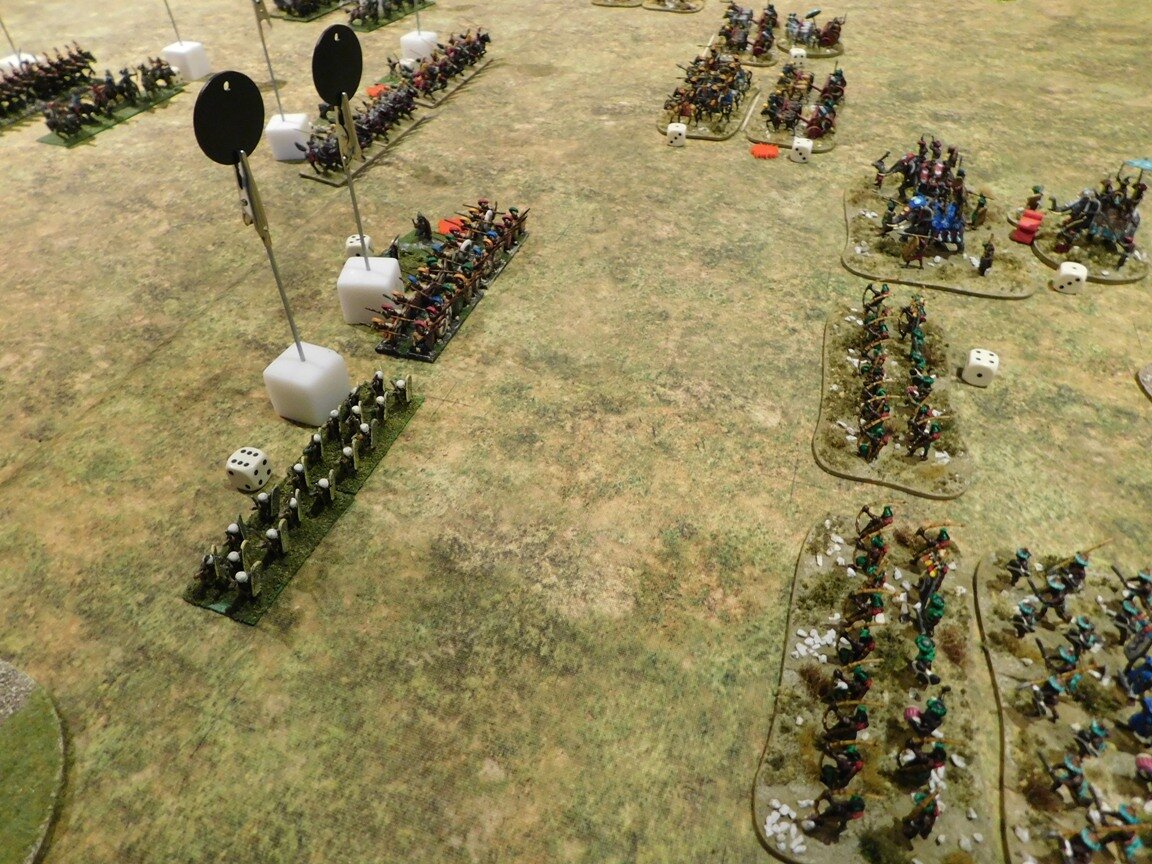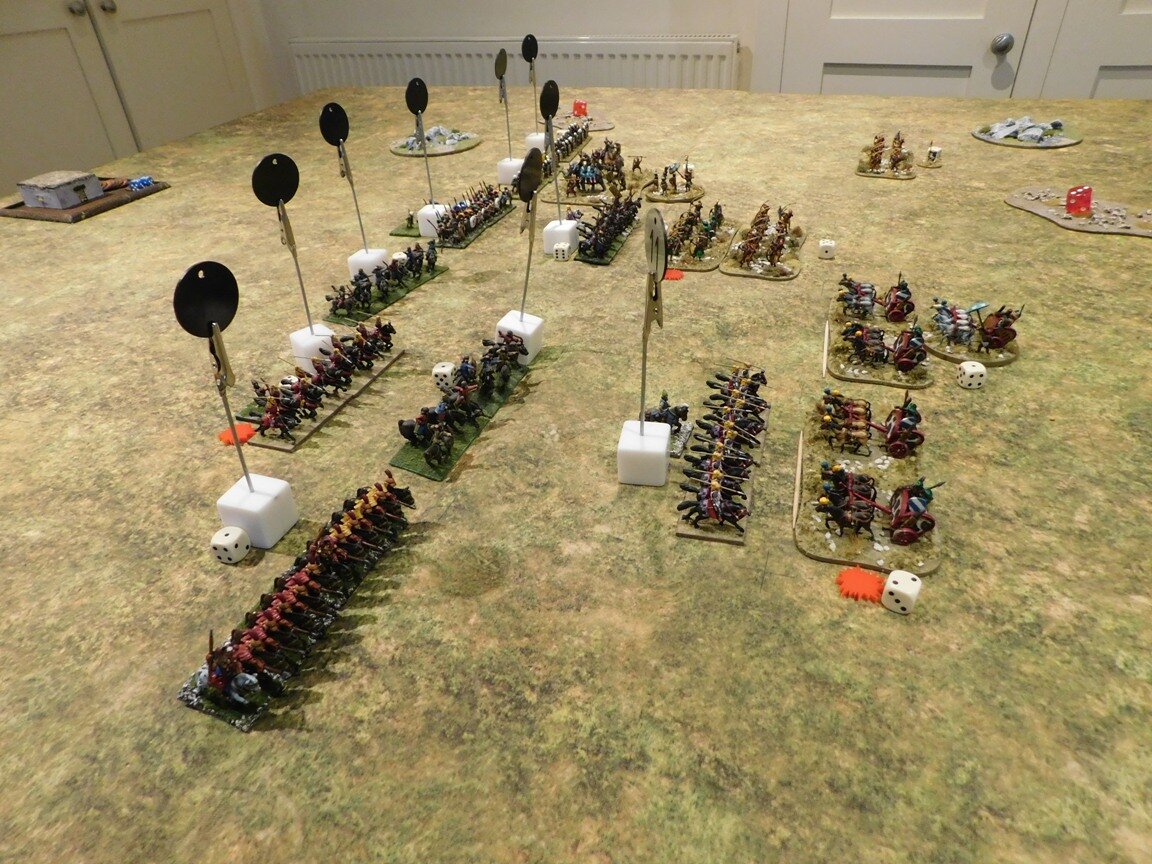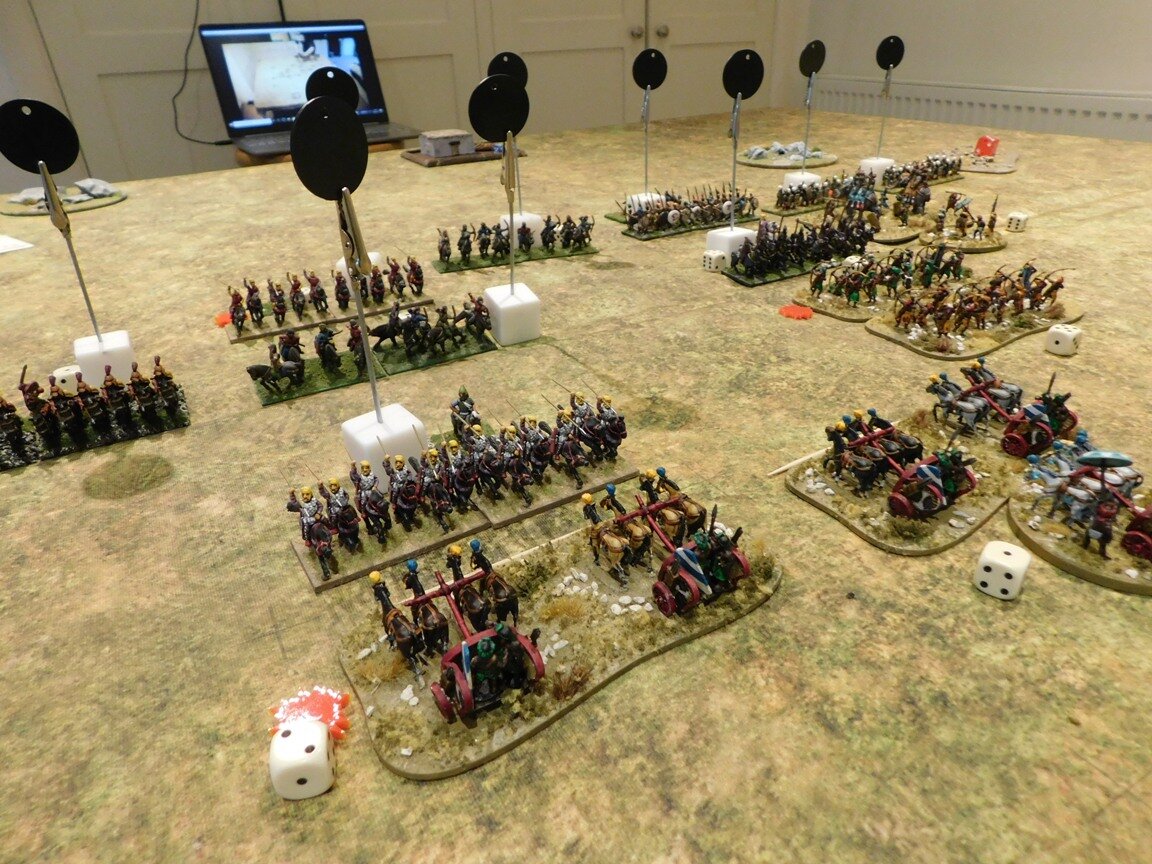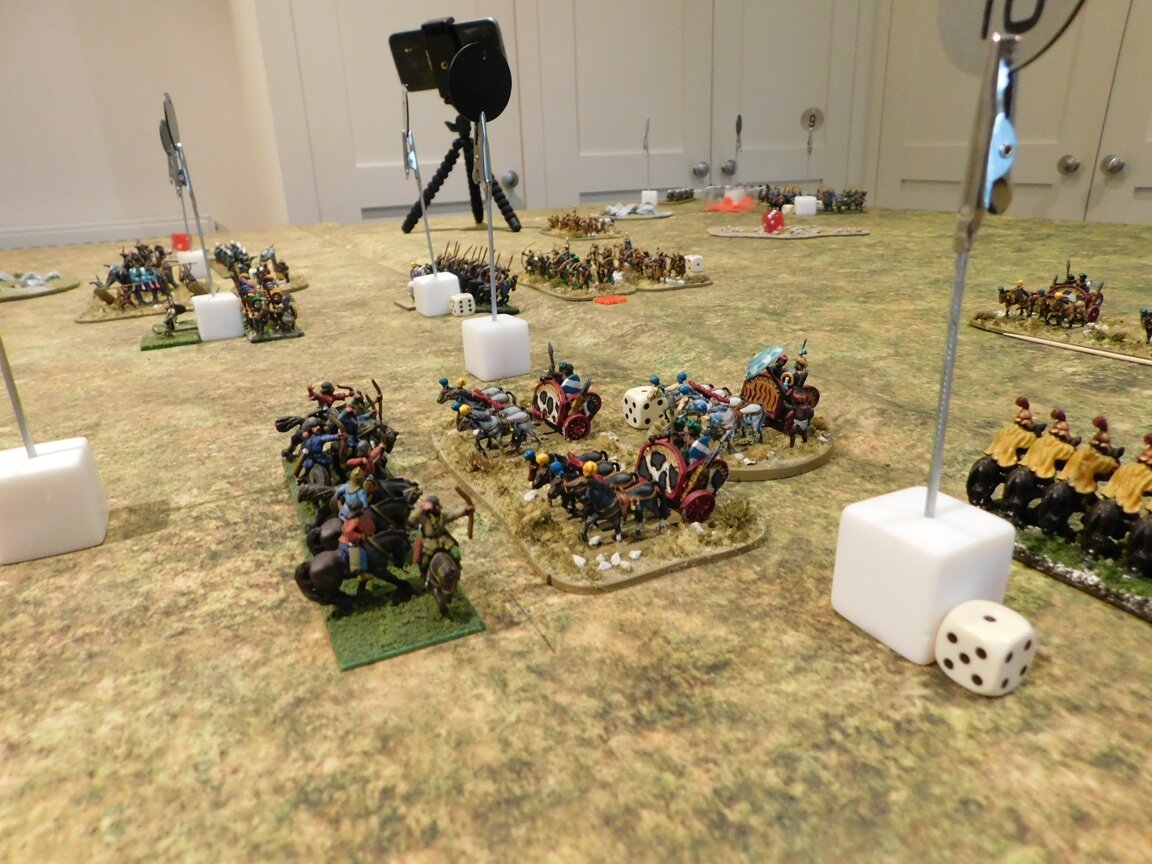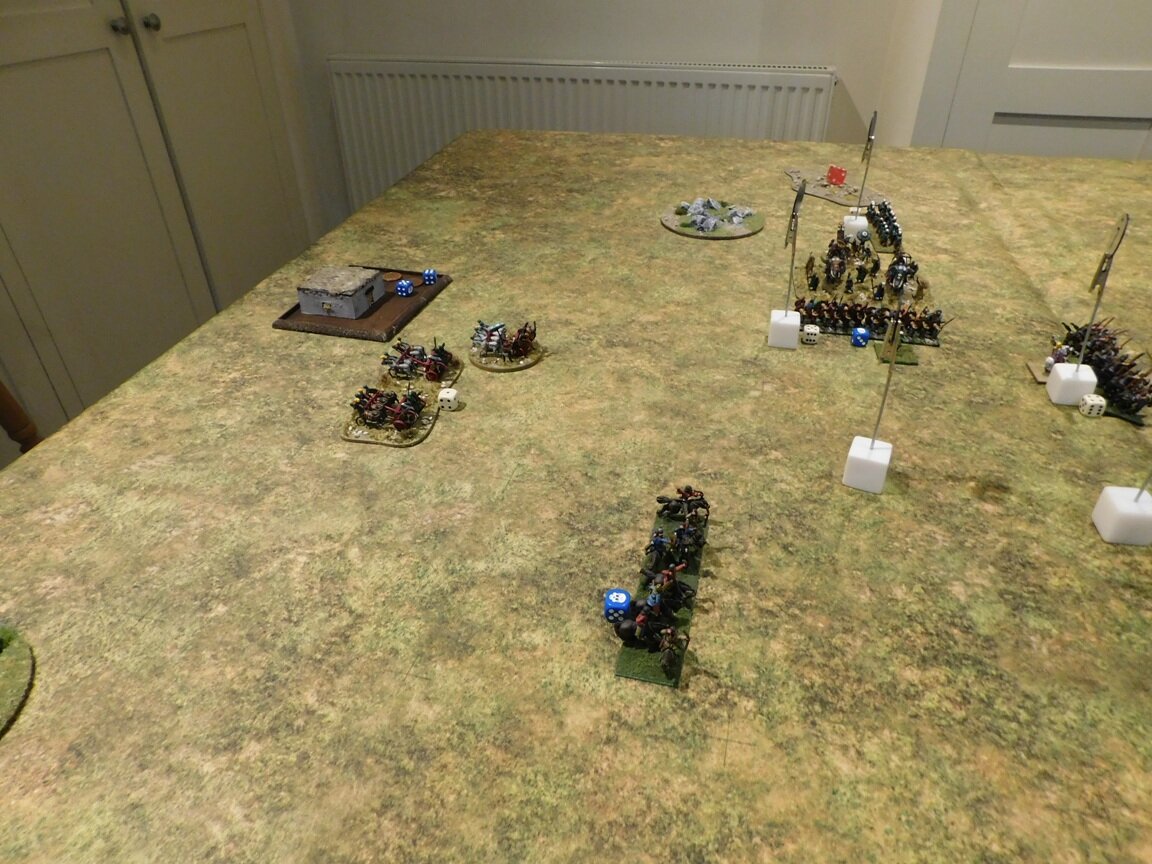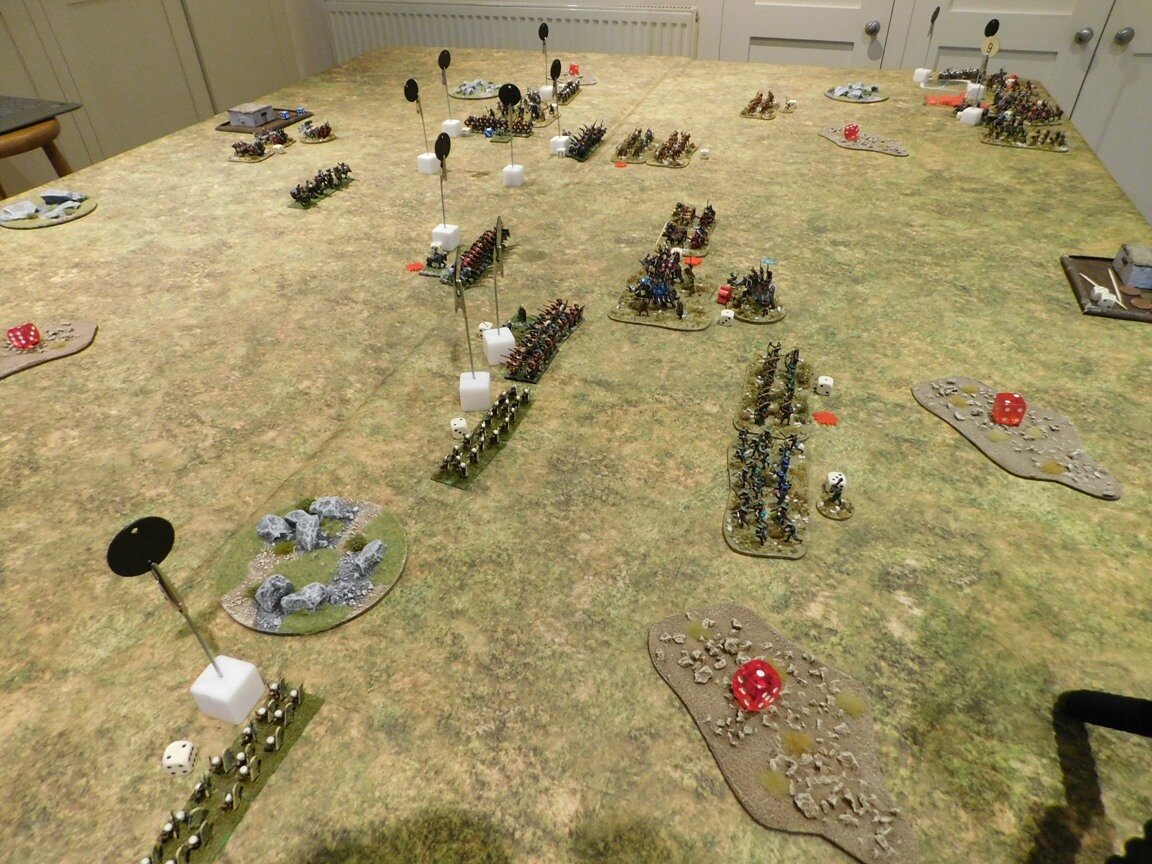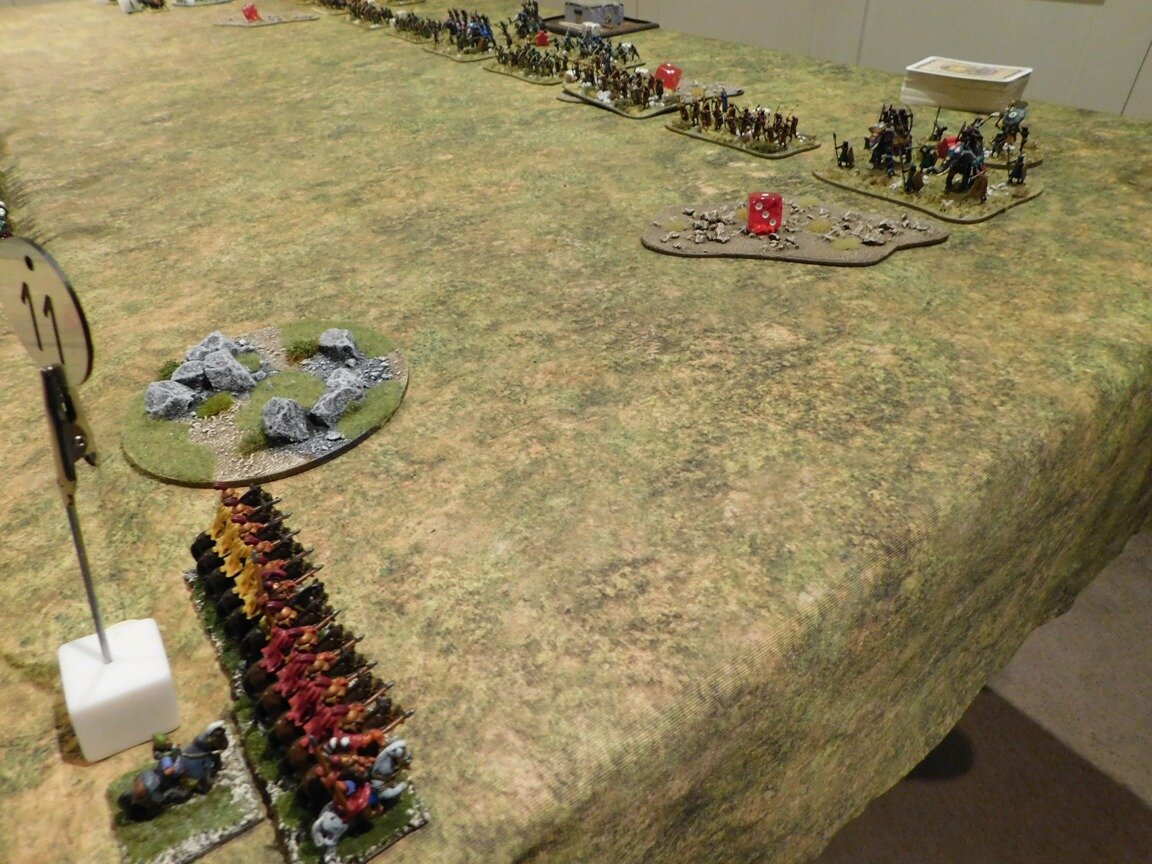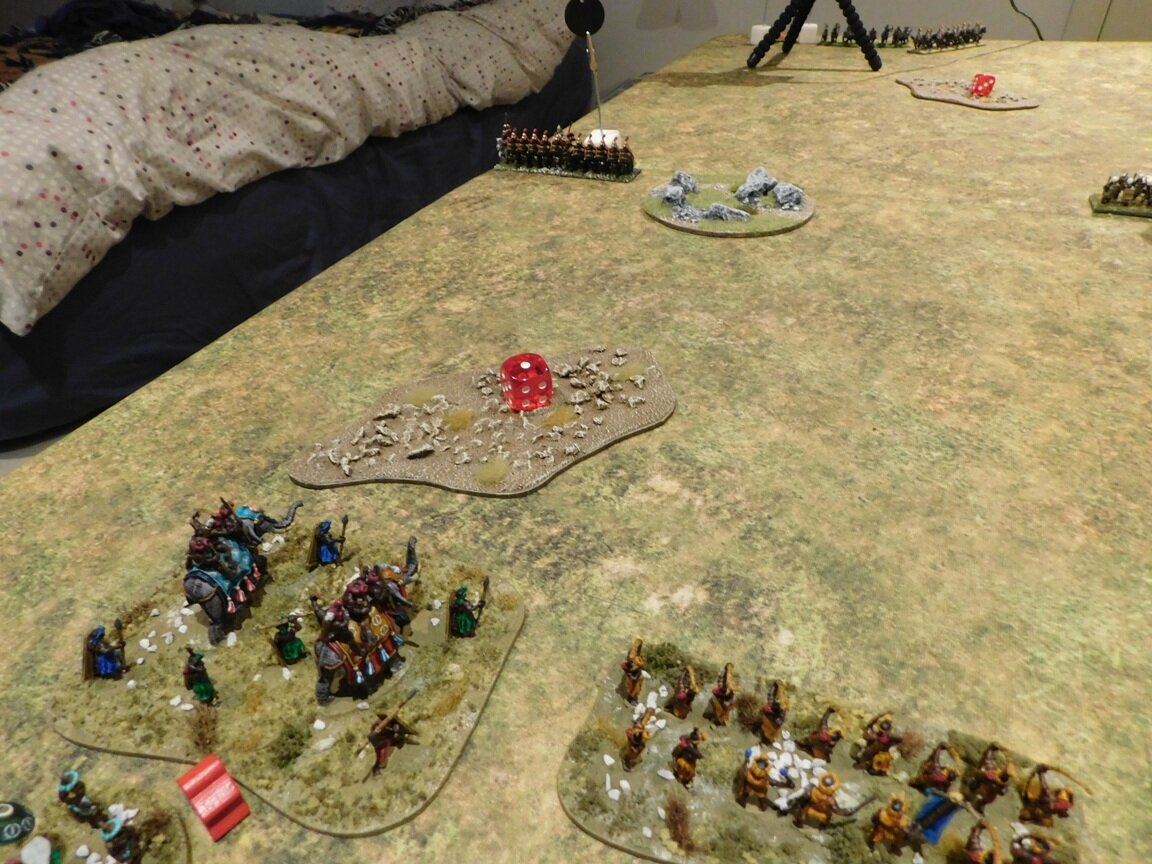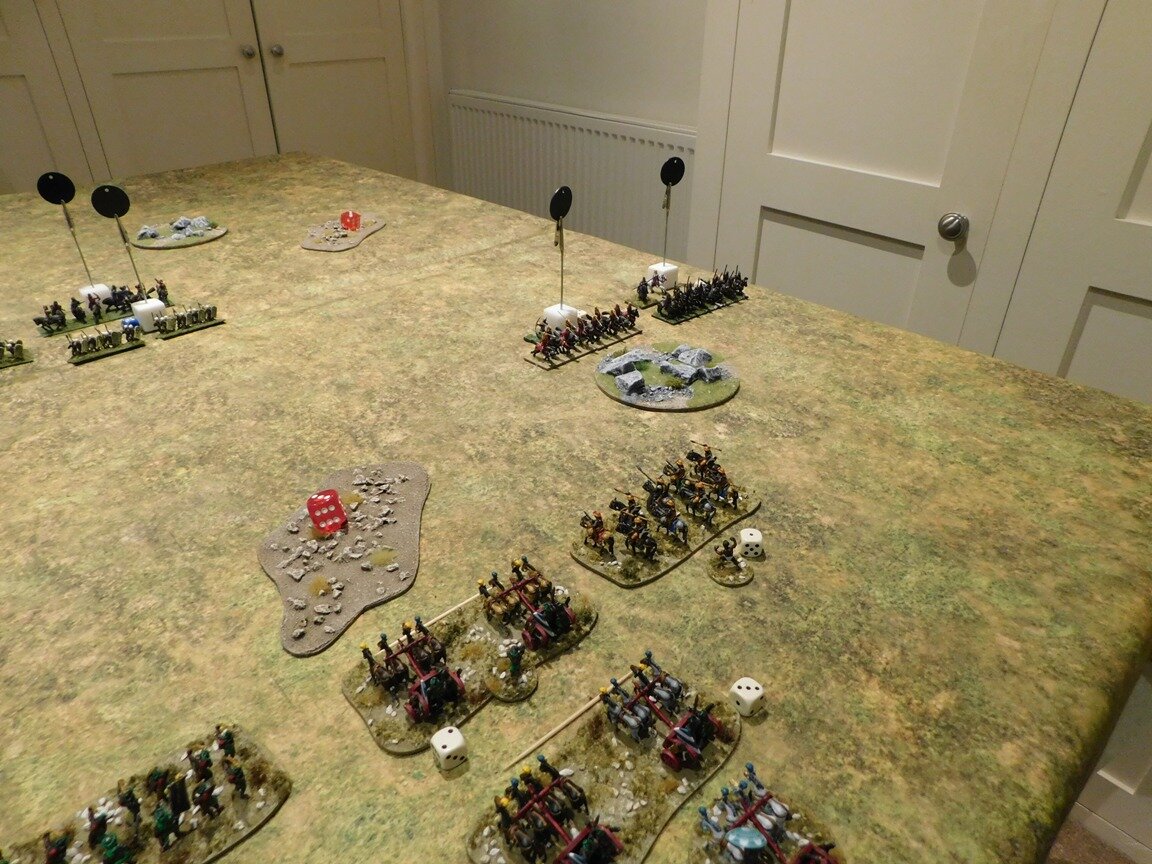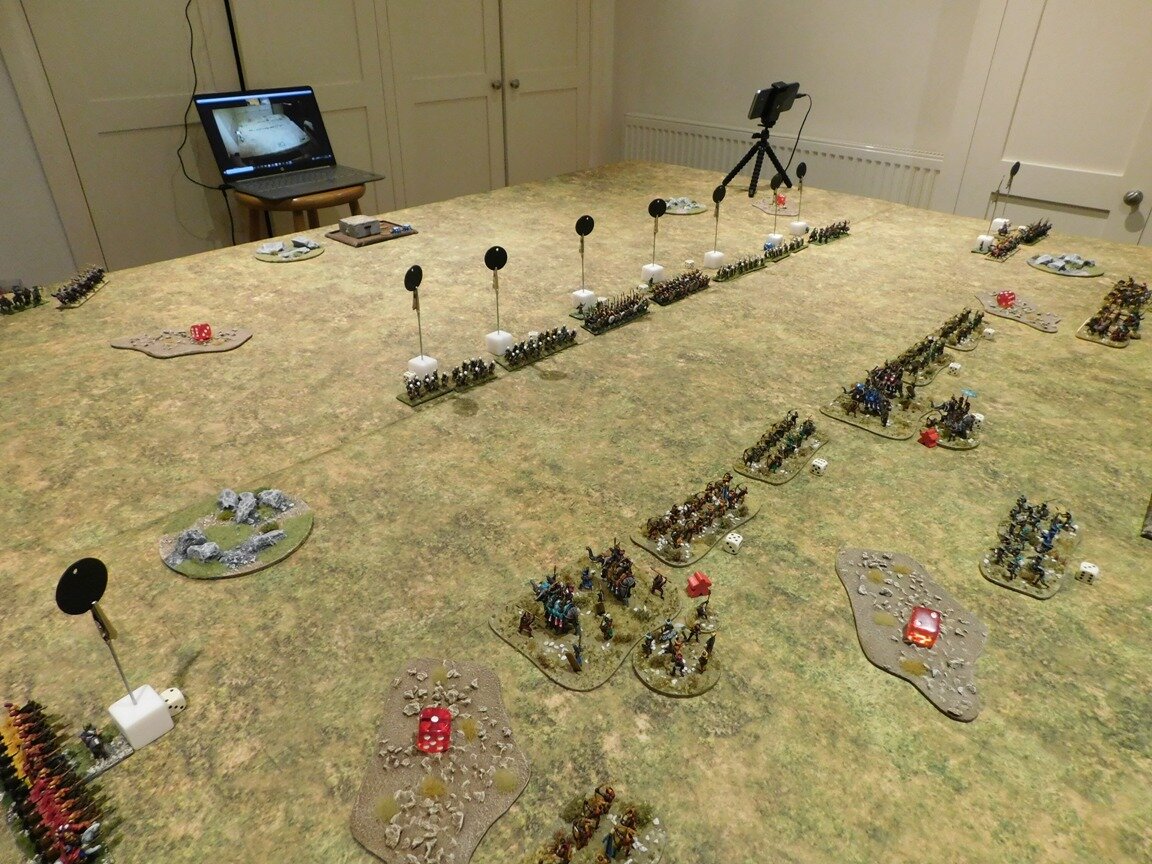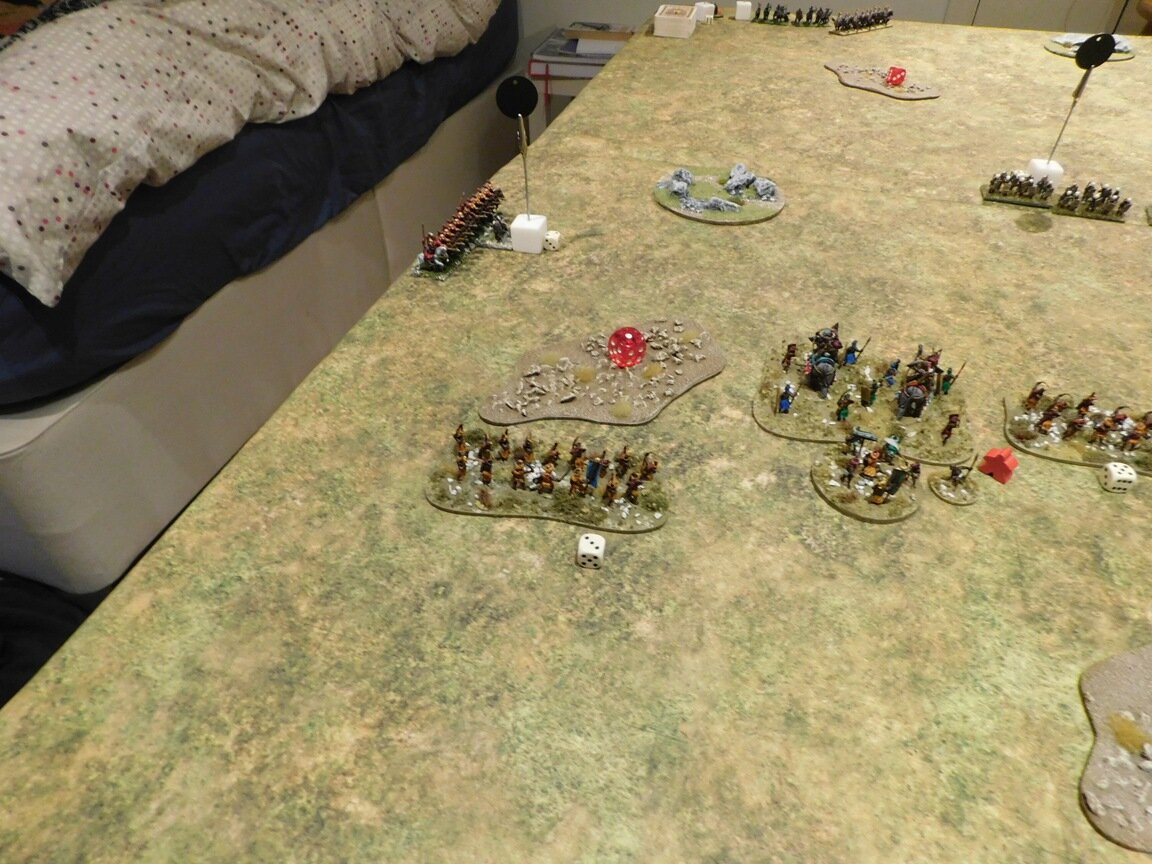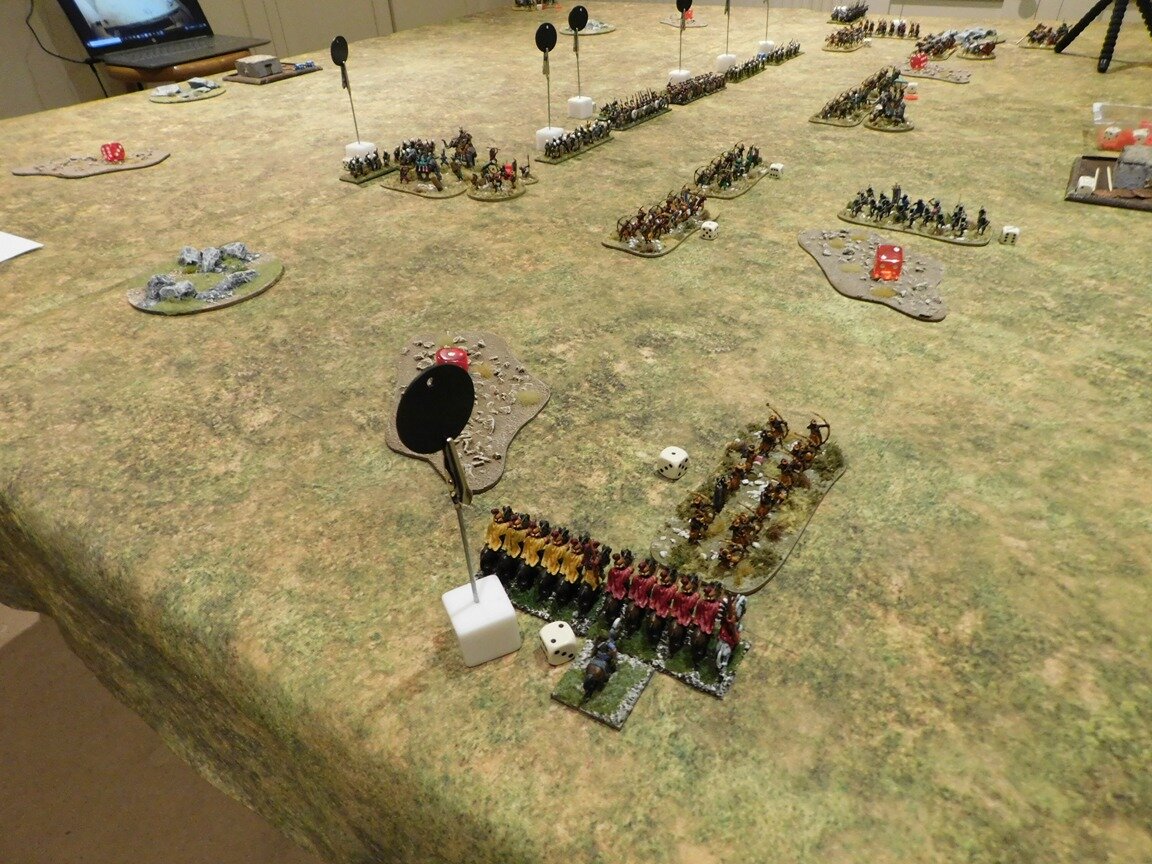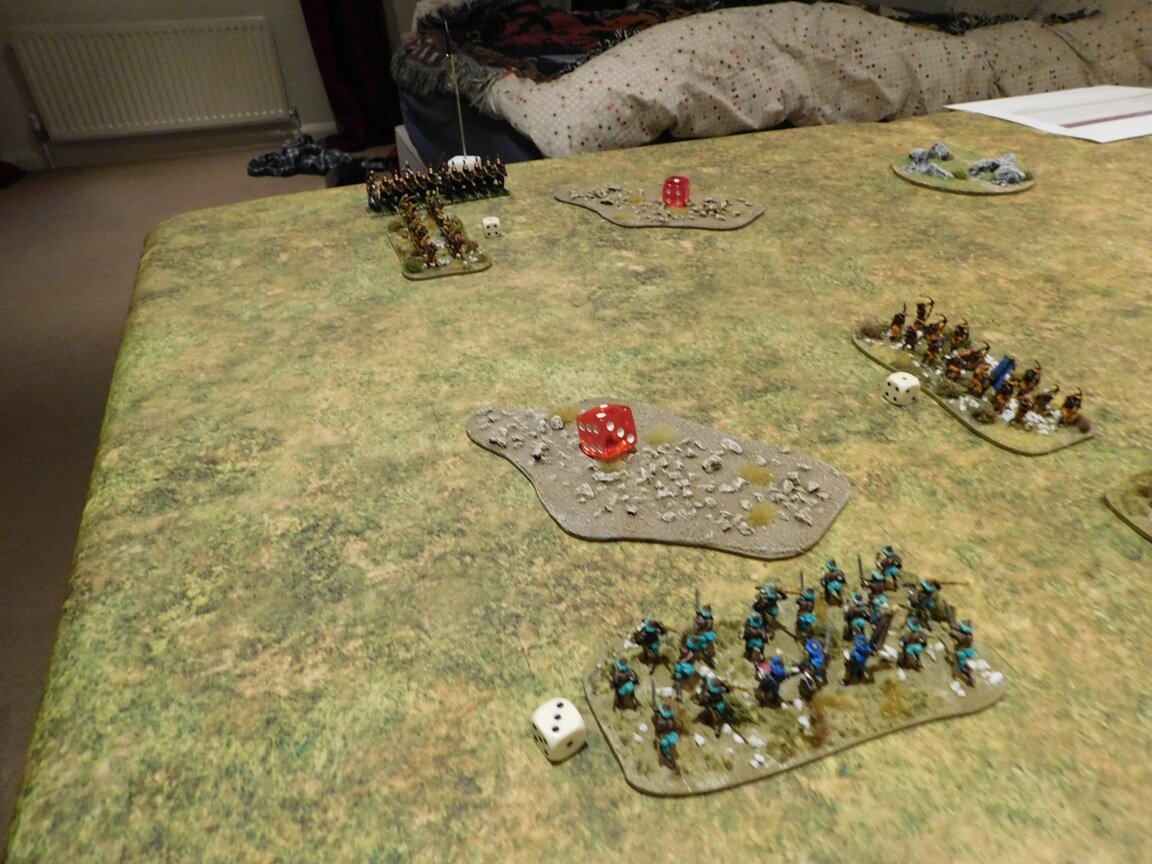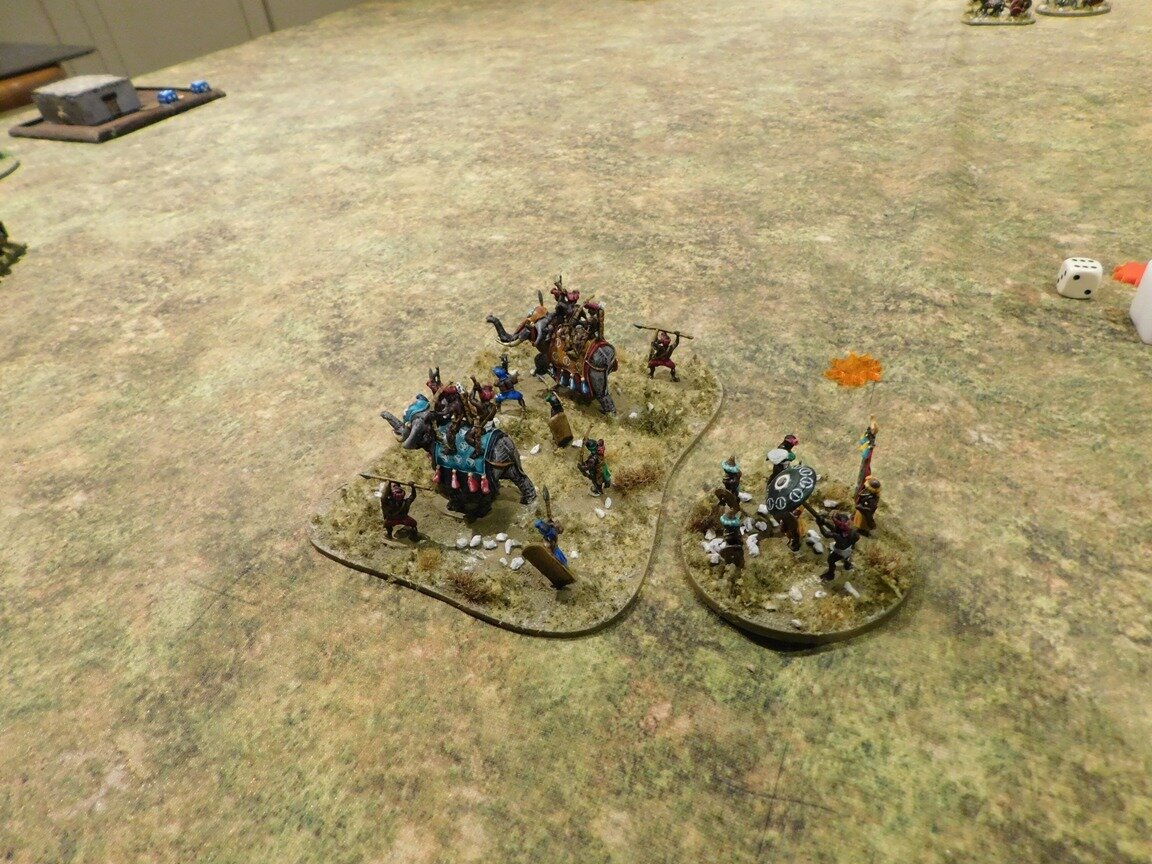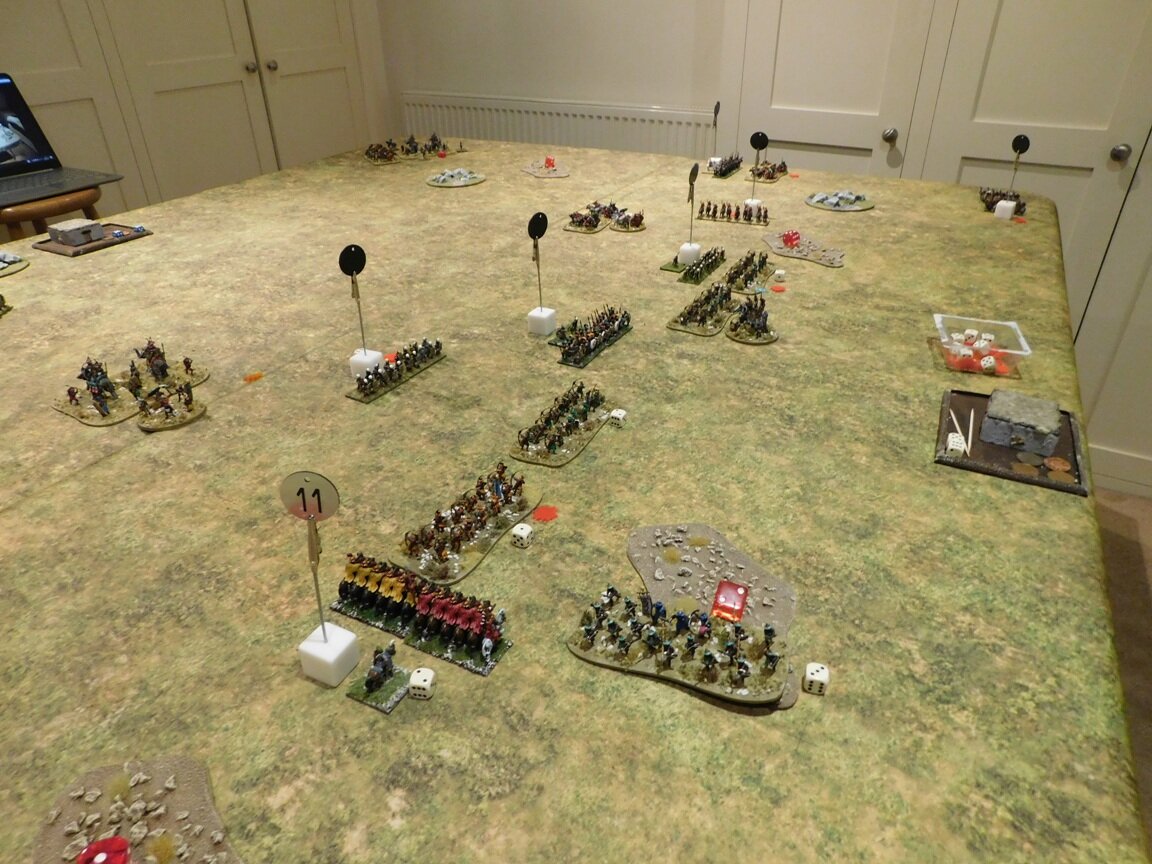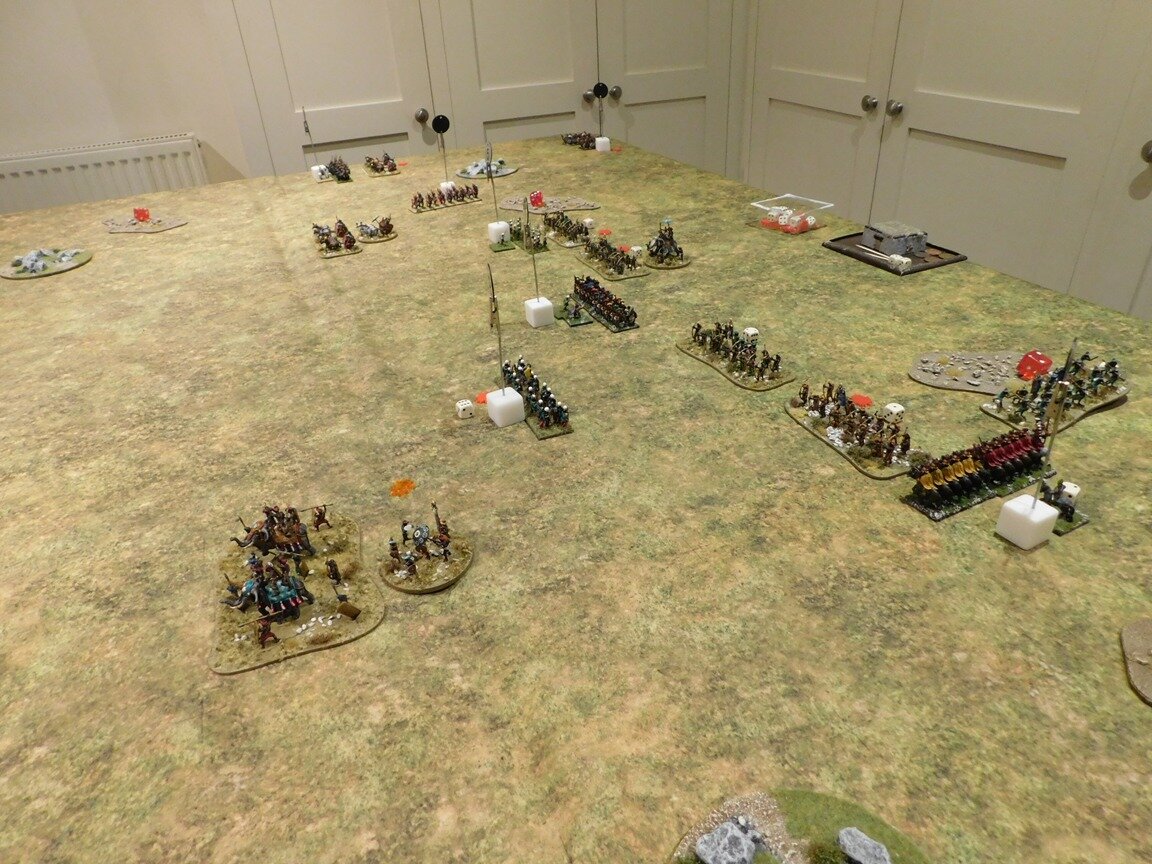AAR TTS: Classical Indians vs Alexandrian Macedonians: The Big One!
/The final game of our To The Strongest battle day was a double-sized game with two players and 260 points per side. Si and I would take the Classical Indians again, Peter and Cayden would take the Alexandrian Macedonians.
One slight twist was that the results of the last four games were applied on top of the existing TTS points system to further balance the armies…and as the Macedonians had won three of the day’s four encounters so far, they had their Victory Medals (lose them all and you lost the game) reduced by a third.
Si and I decided to try the same plan that had almost worked in an earlier game: our left flank (under me) would hang back and try and hold the enemy’s main attack with the Companions and Phalanx whilst our right flank (under Si) advanced quickly, brushed aside the lights in front of it, and curled around to hit the phalanx etc in the side.
That was the plan…but unfortunately it didn’t work. Although the left flank did some heroic work holding up the Companions (the new rules about Javelinmen in rough terrain being very useful), the various Macedonian Phalanxes proved pretty unstoppable in the left centre, and our troops on the right just couldn’t get into play fast enough.
So there you have it: despite even points and a bias on the Victory Medals, the Indians still lost, Over the course of the day, that made four out of five Macedonians victories: I guess there’s a reason Alexander conquered the known world!



